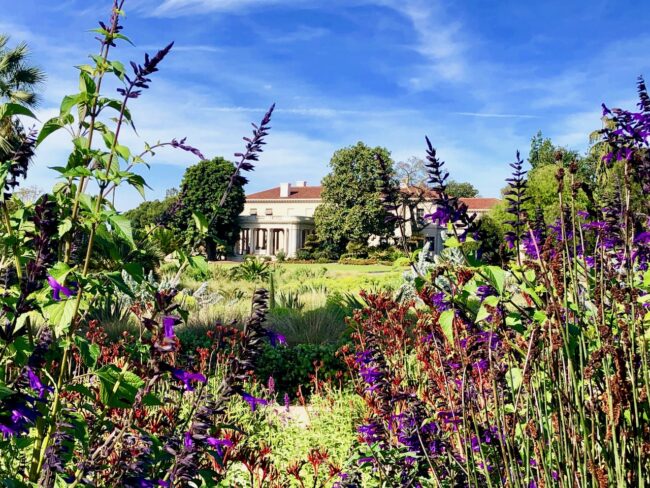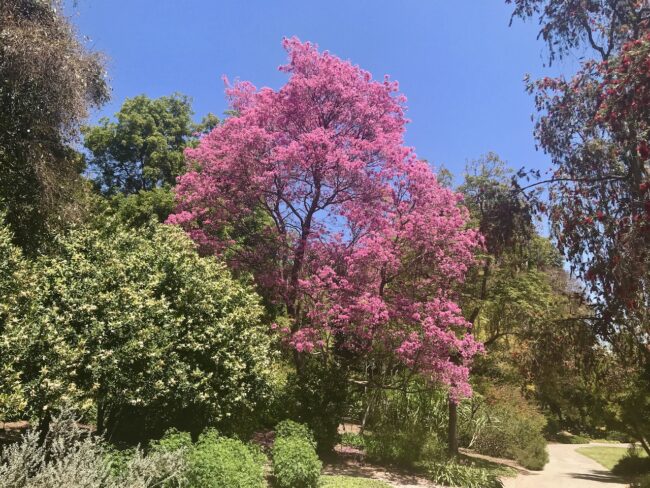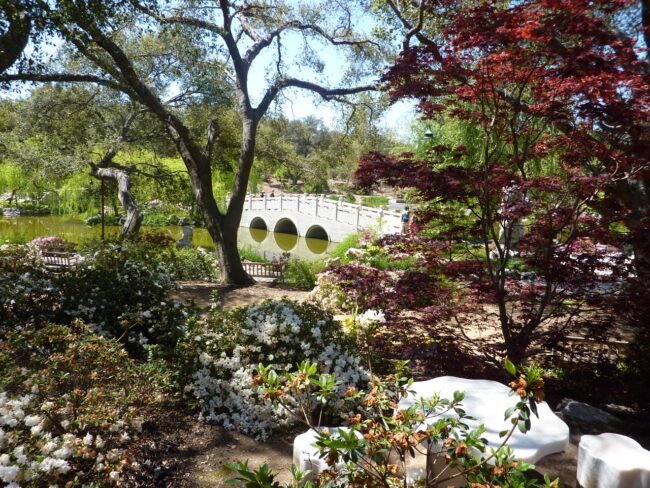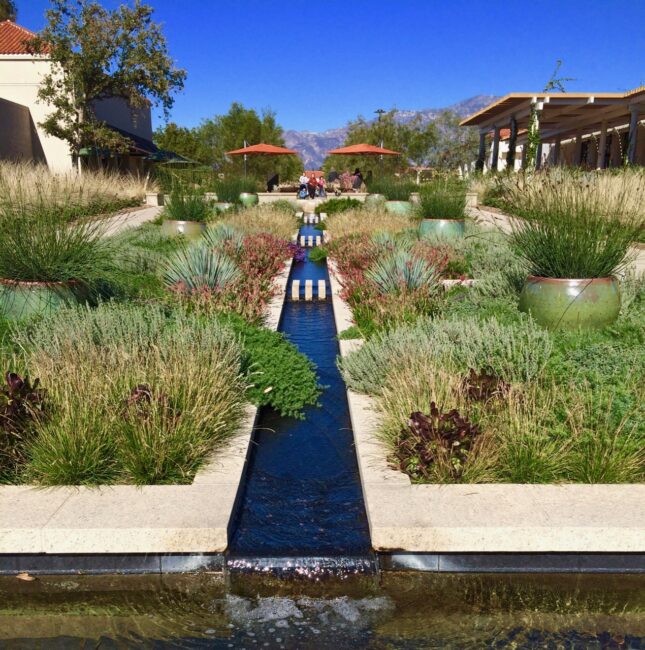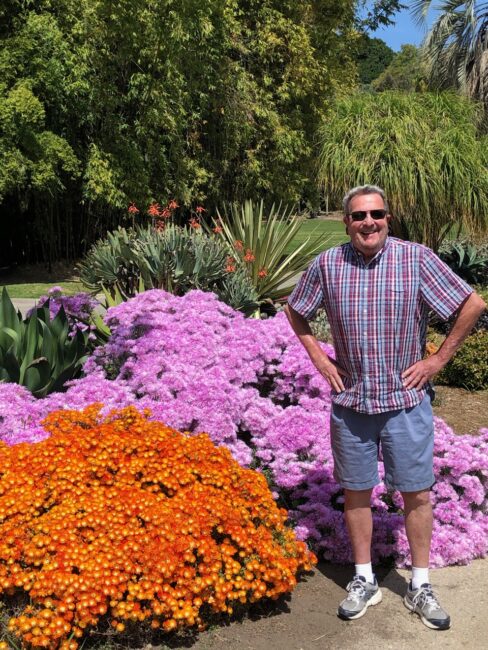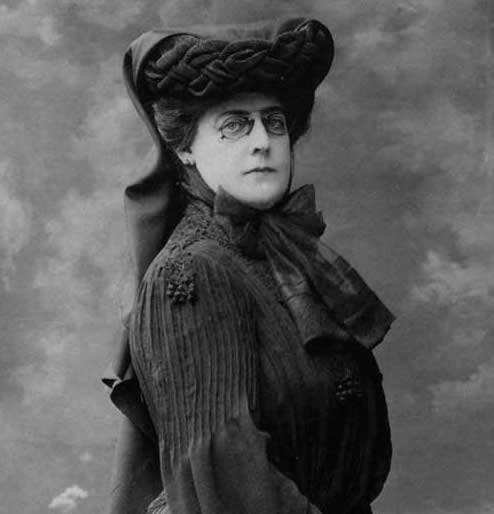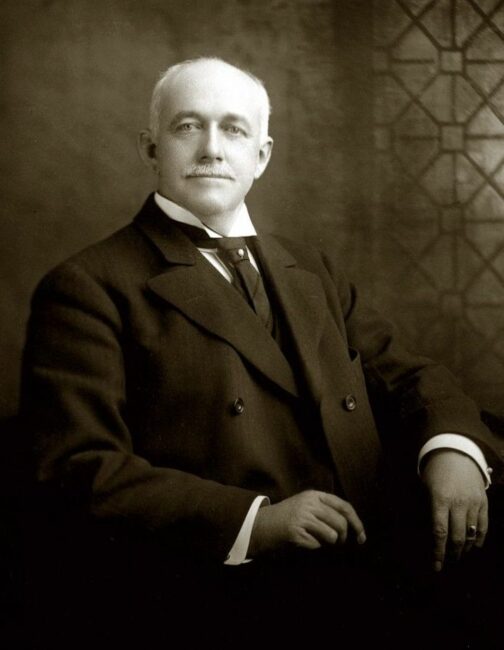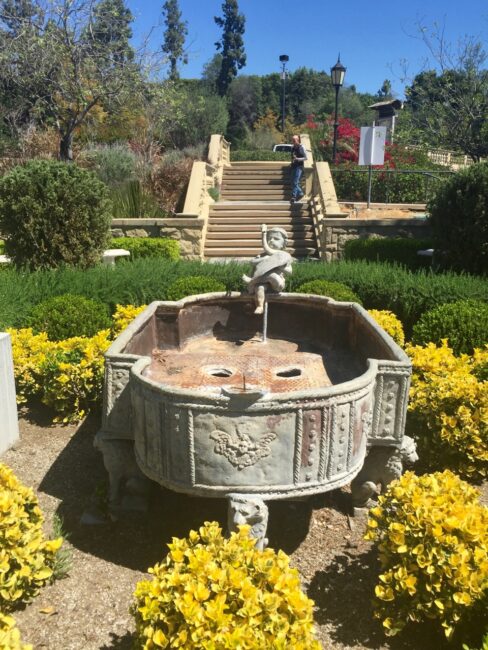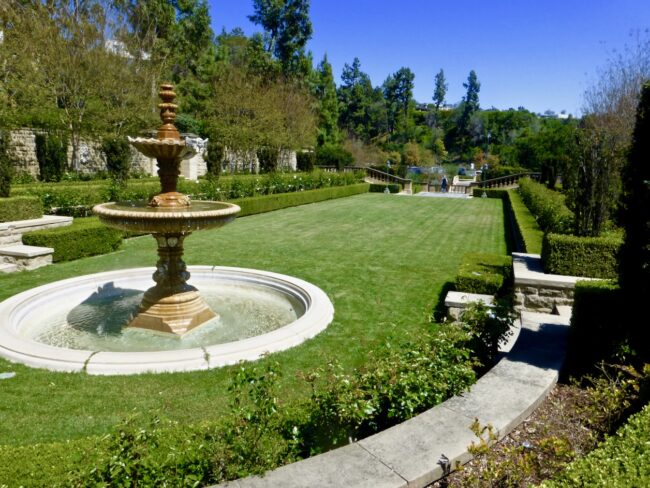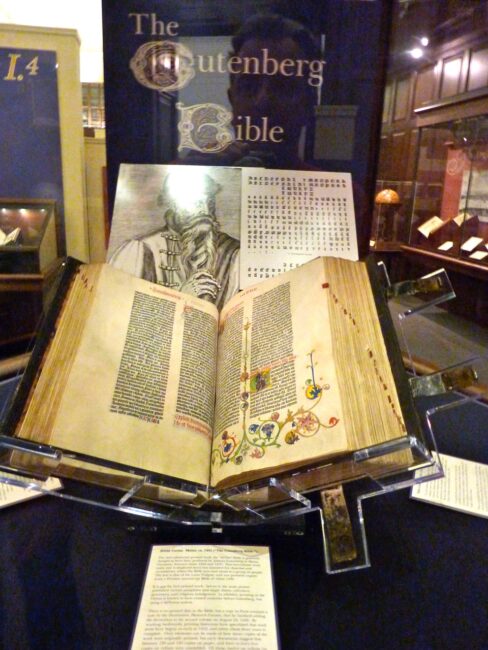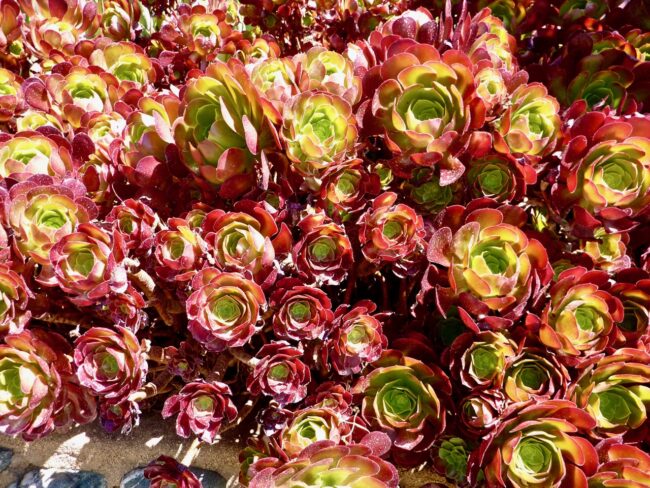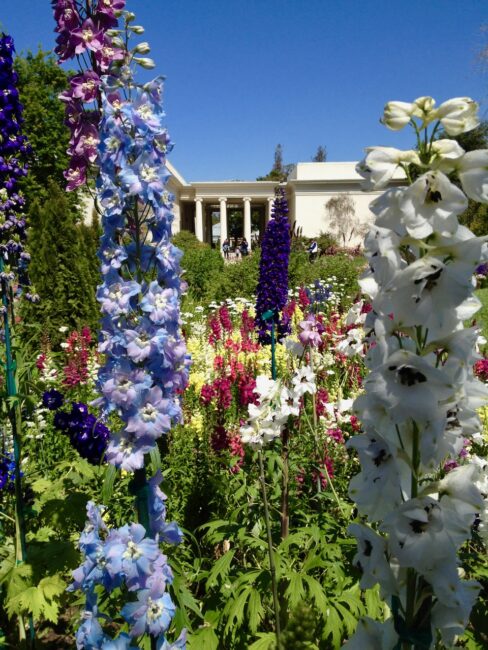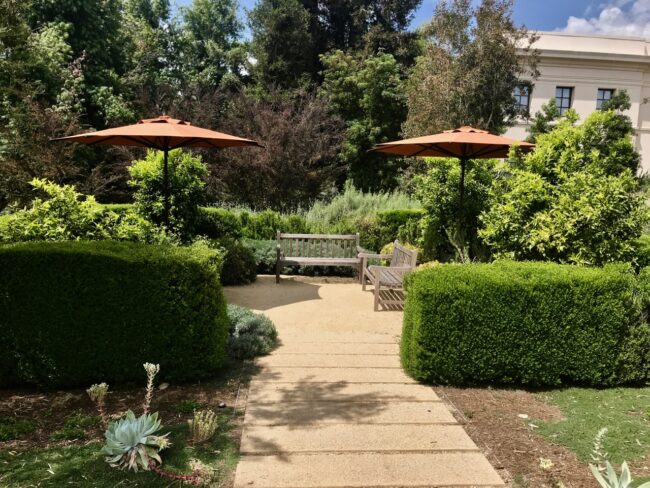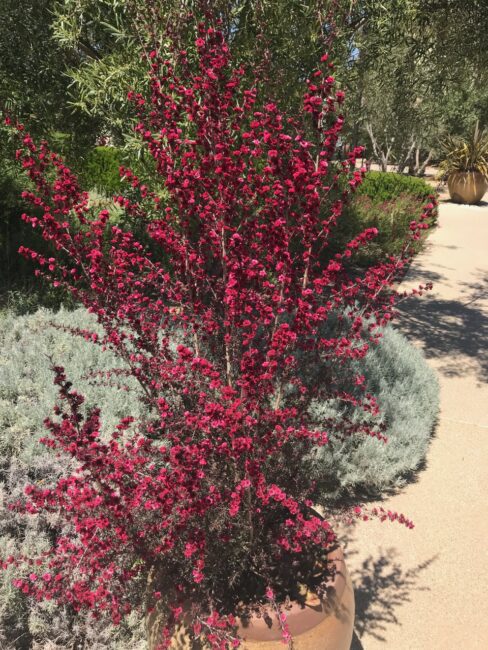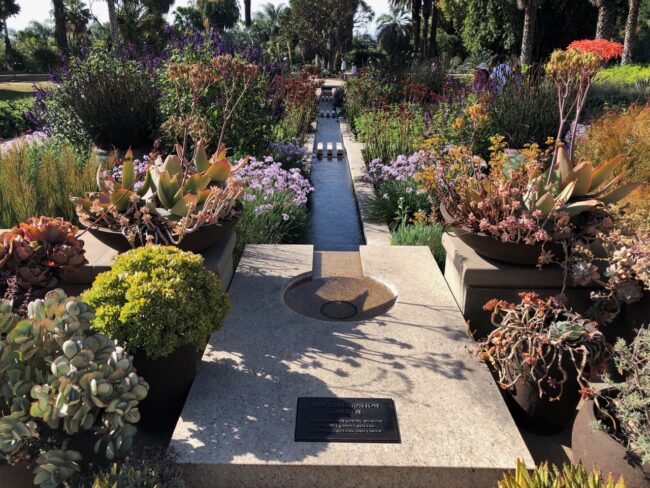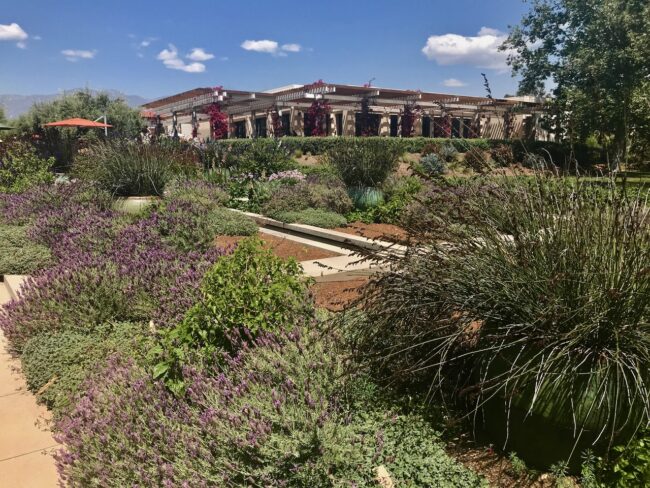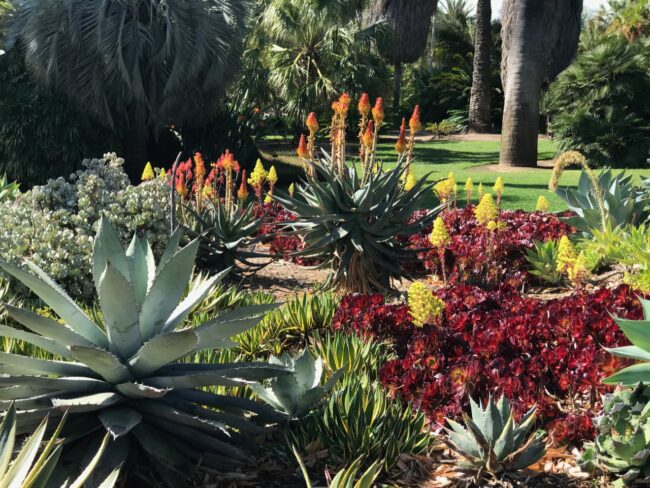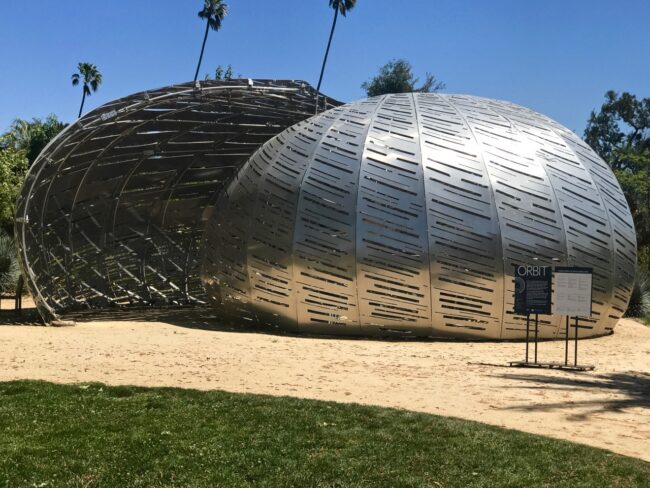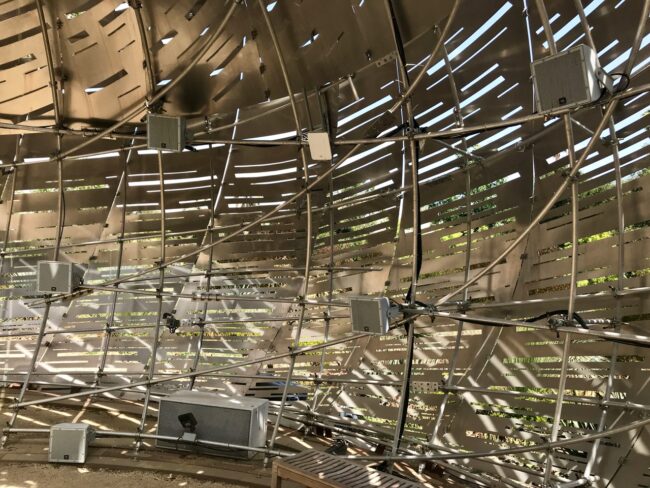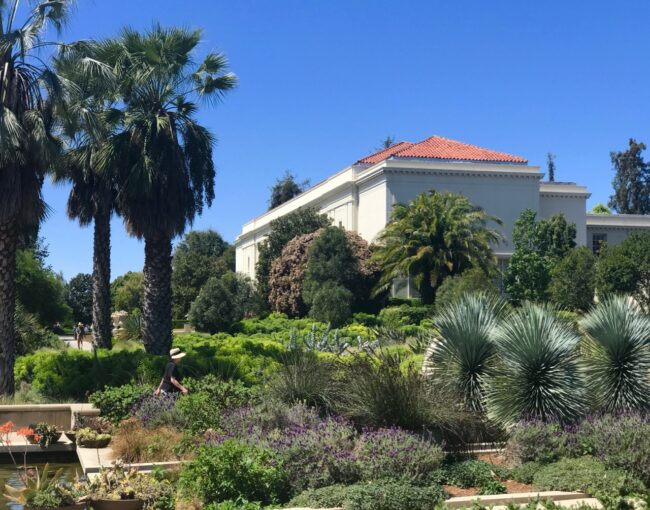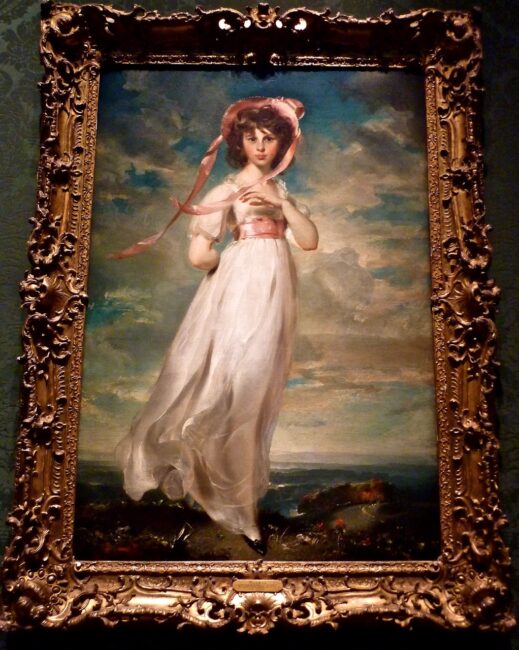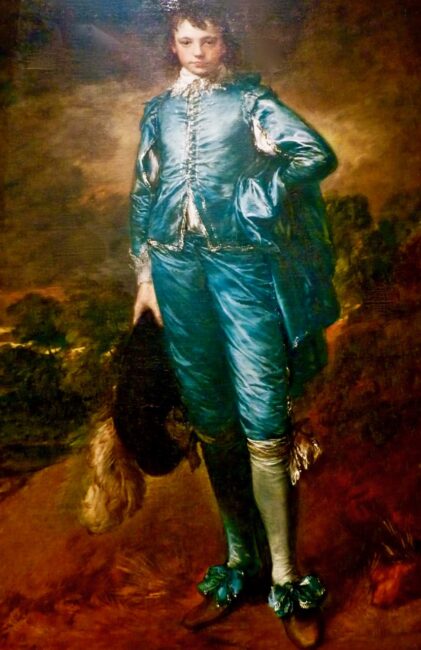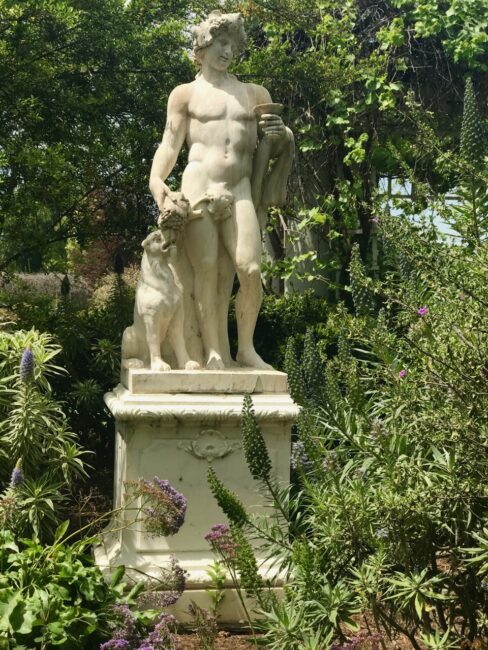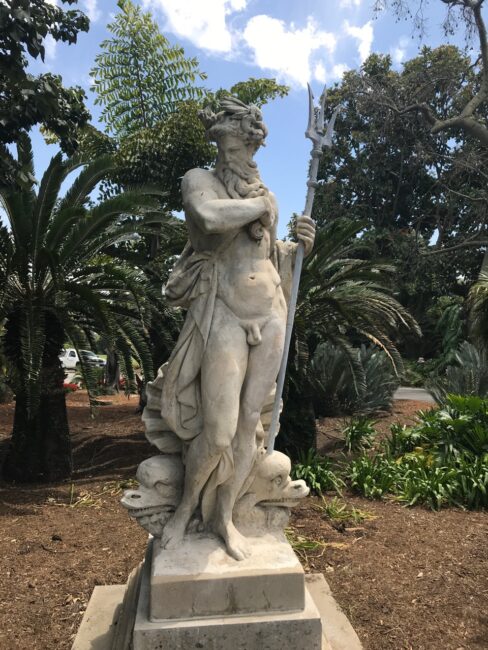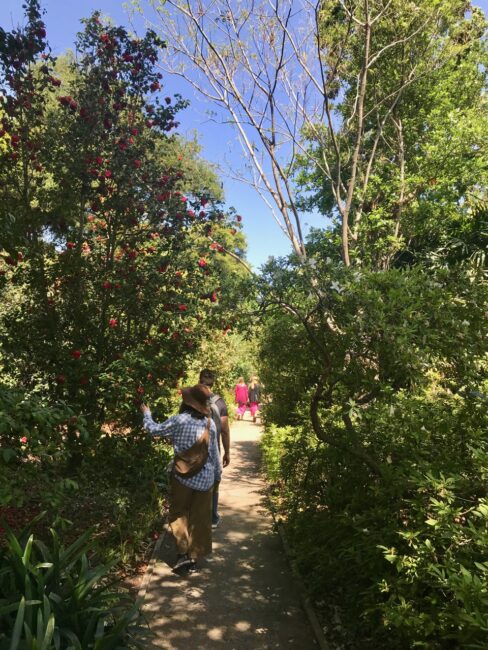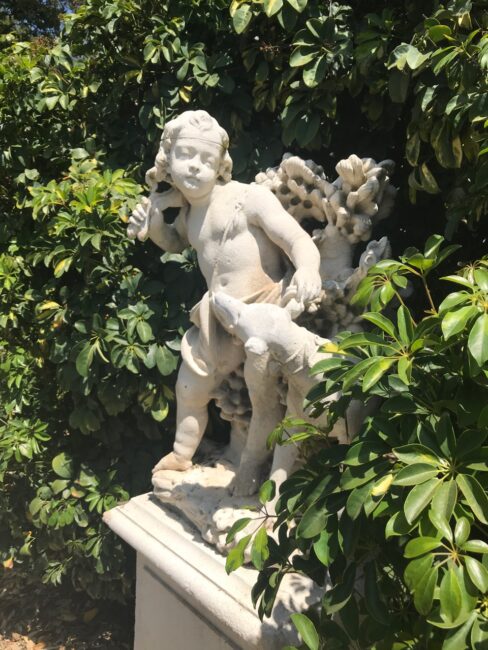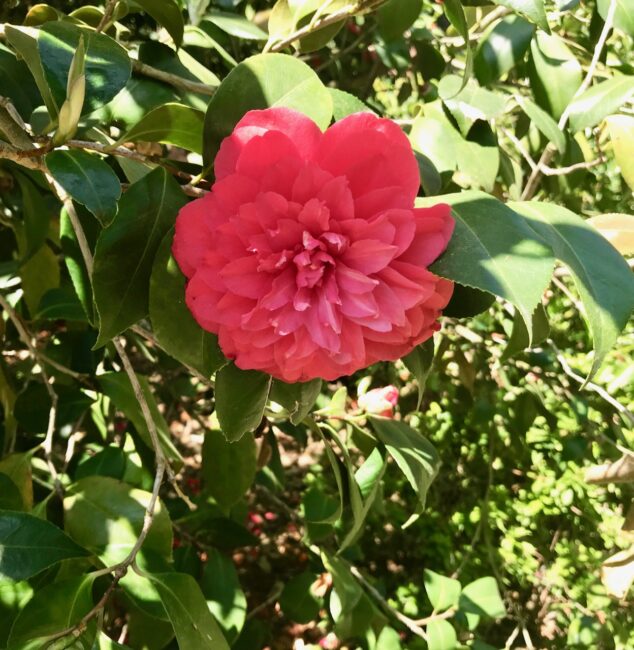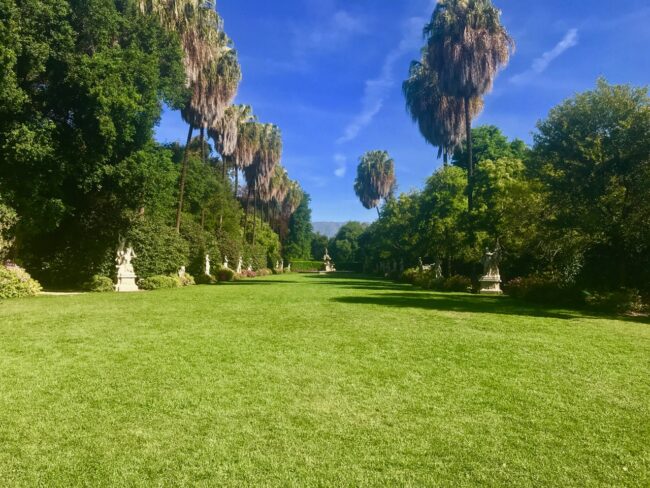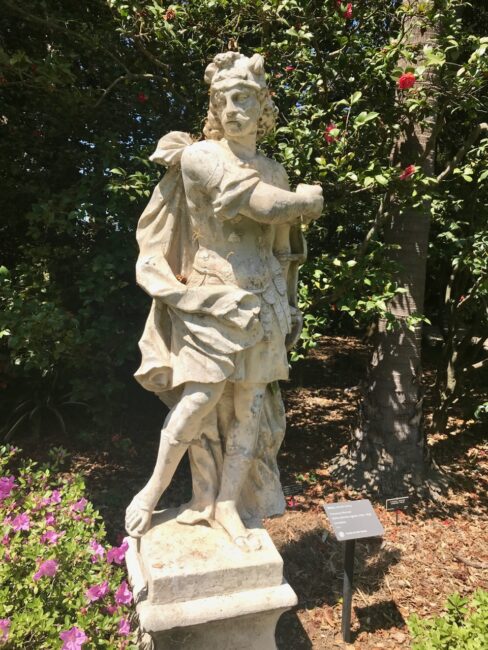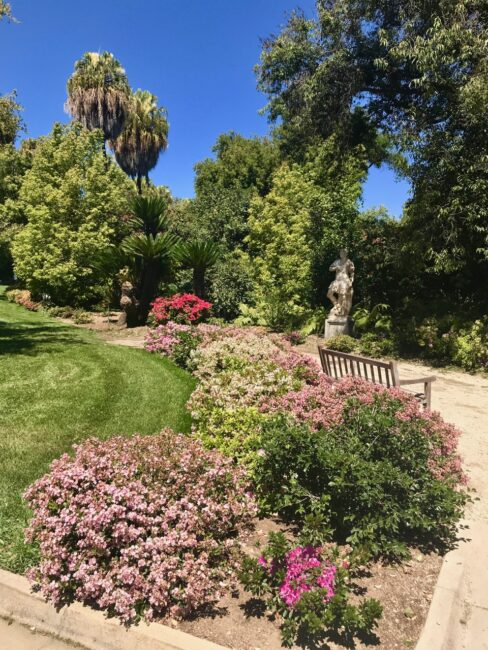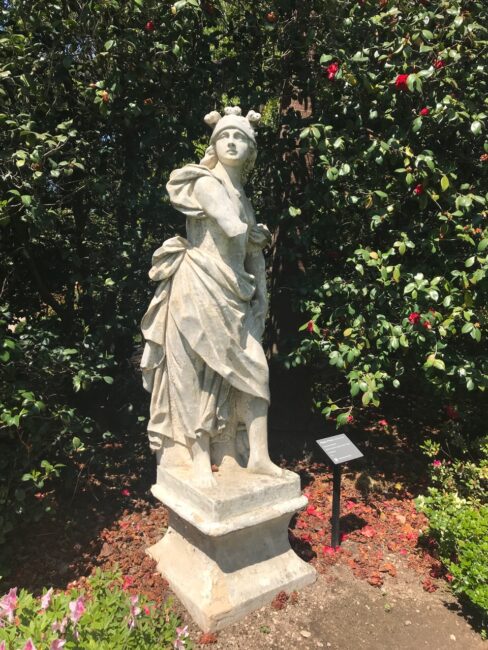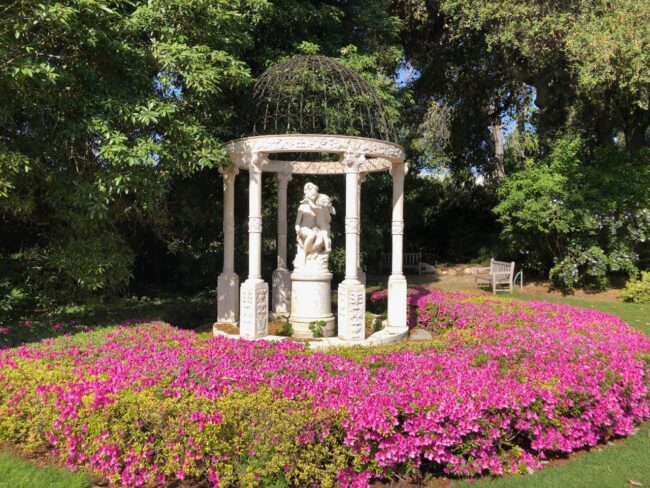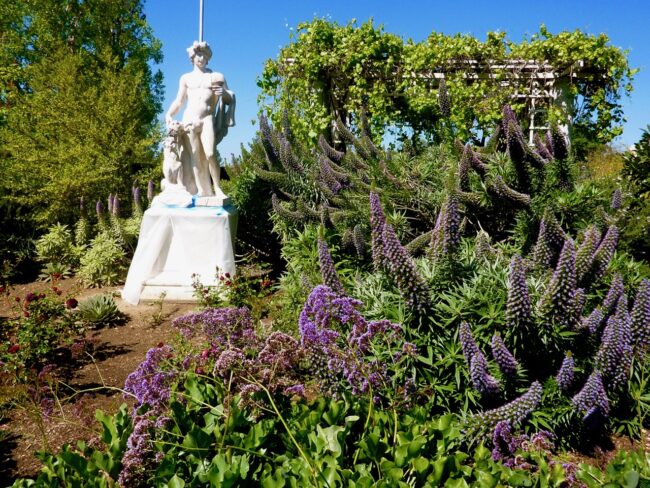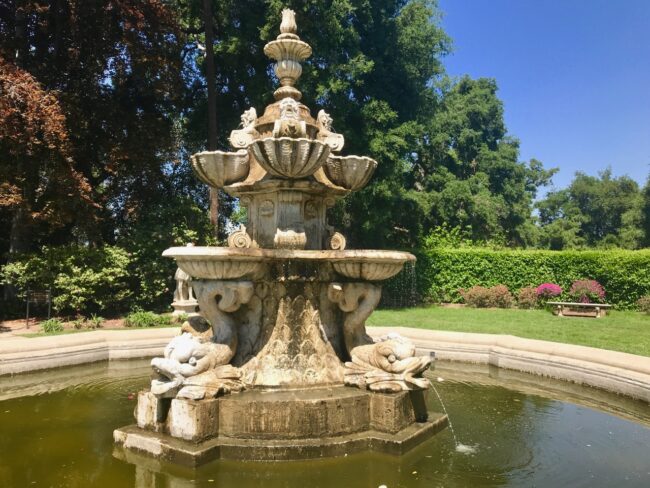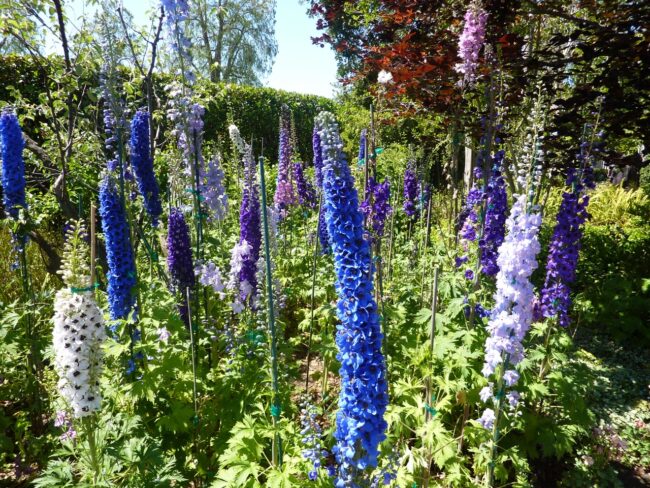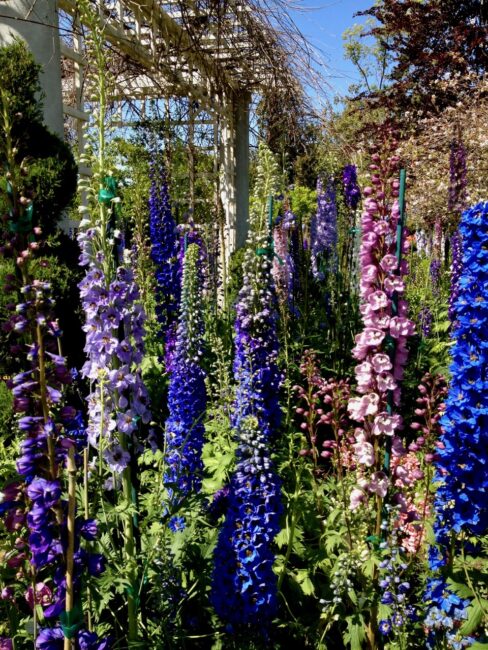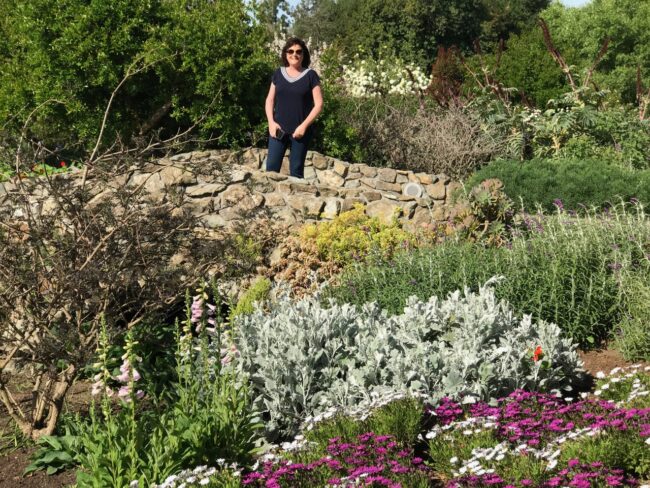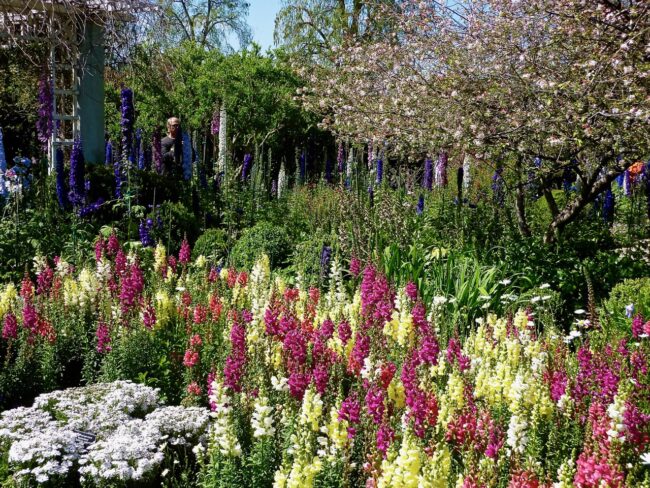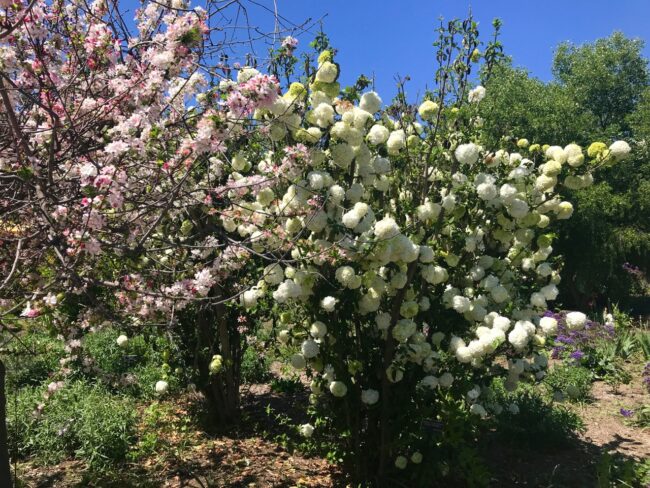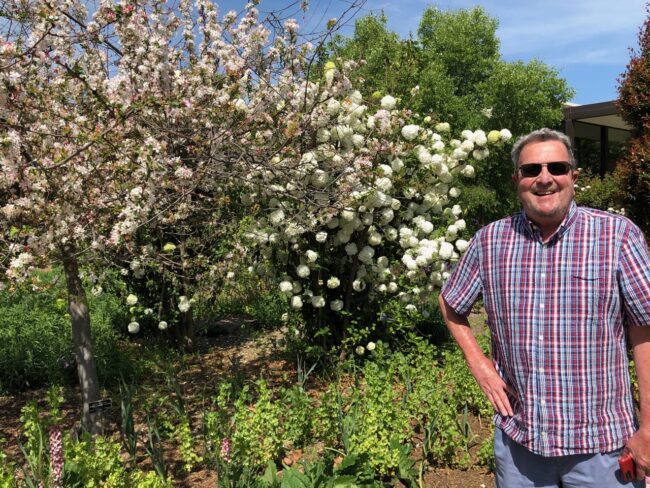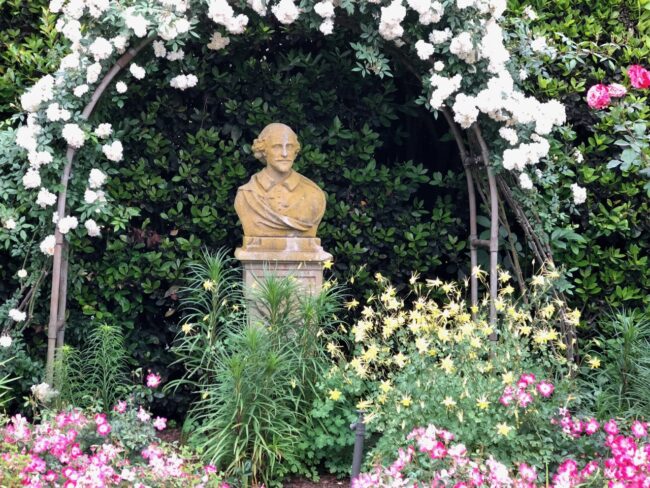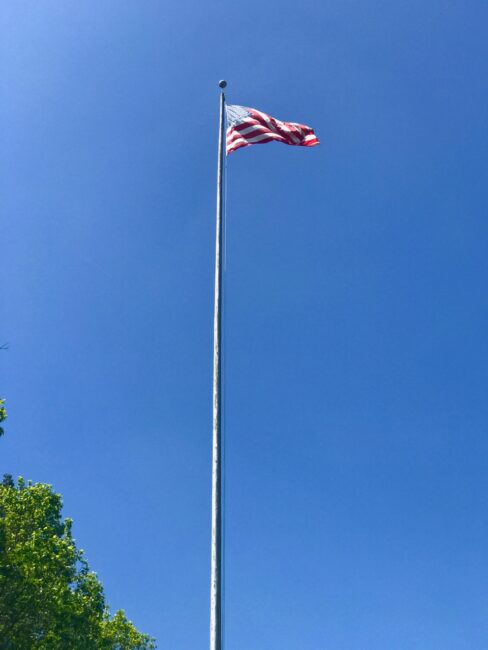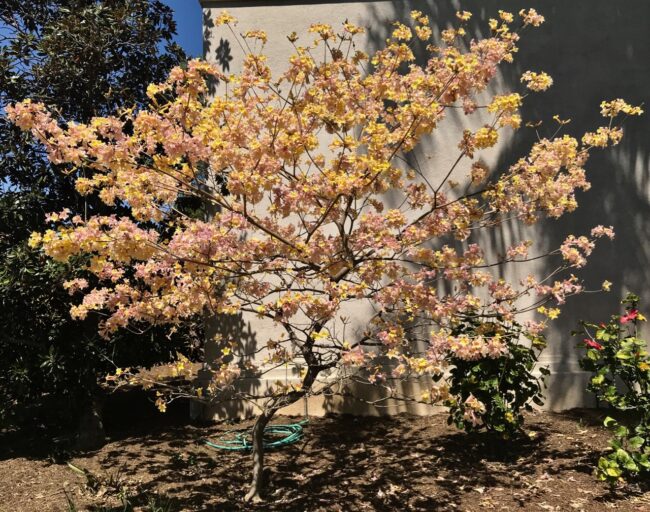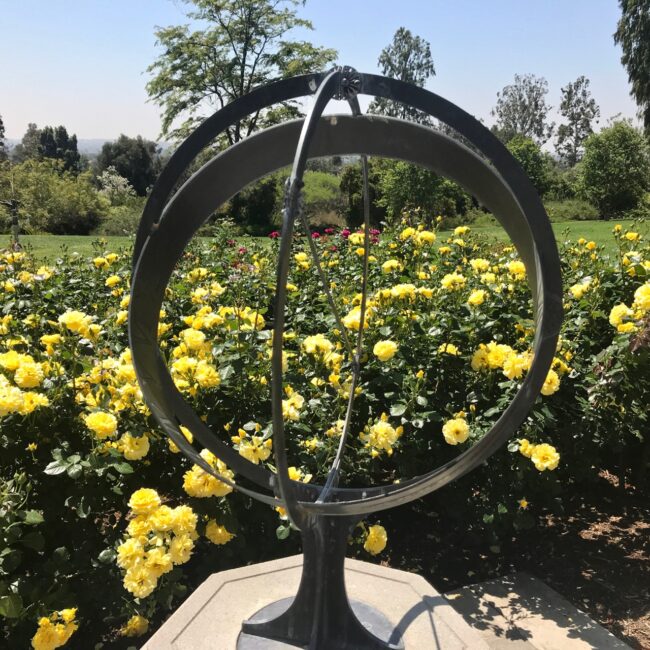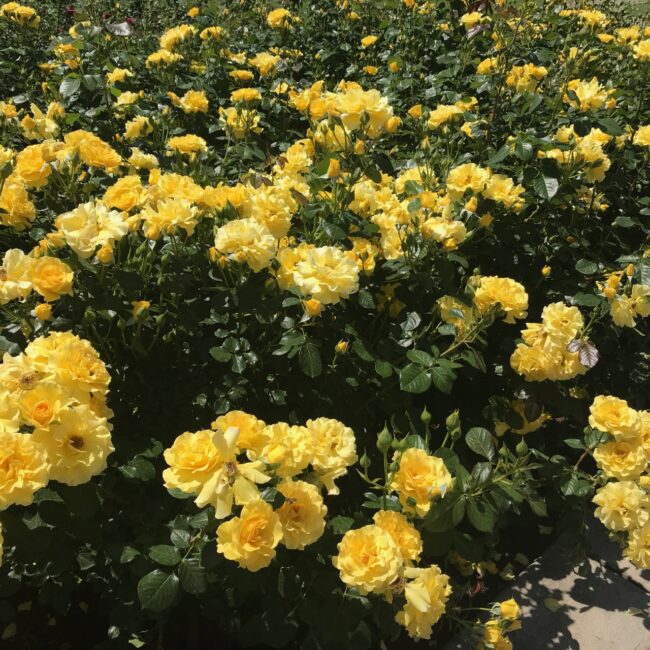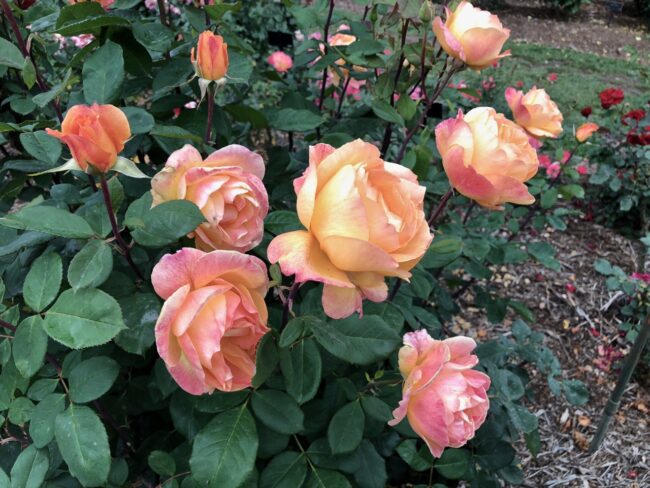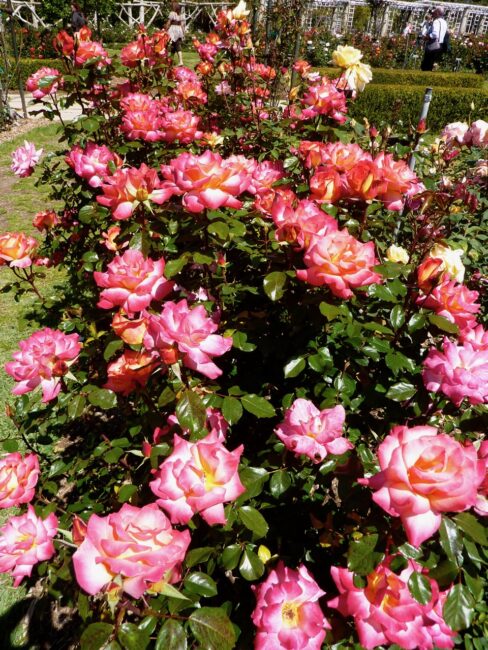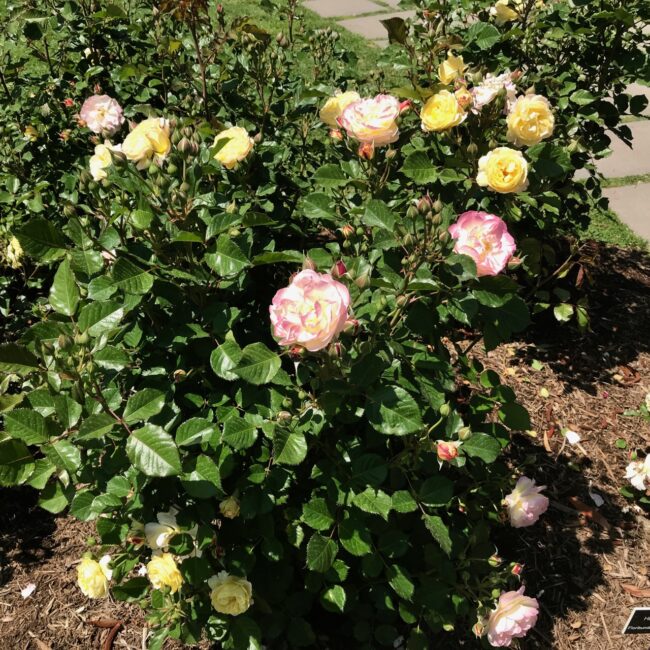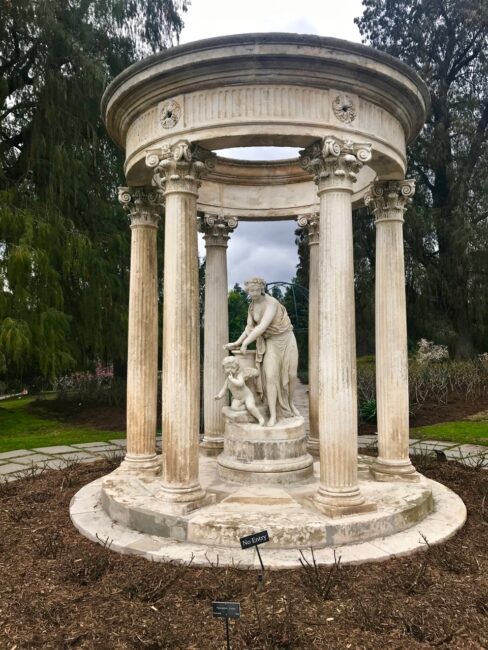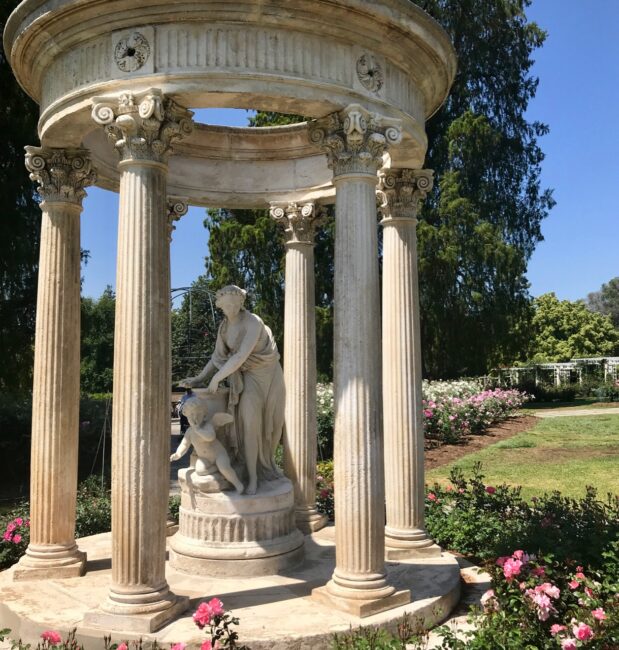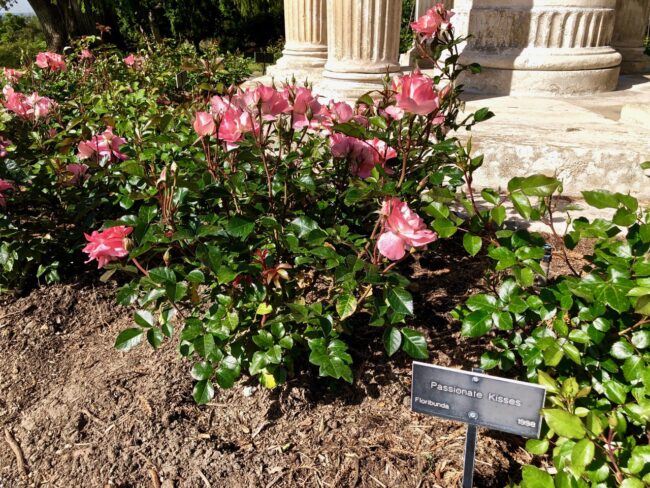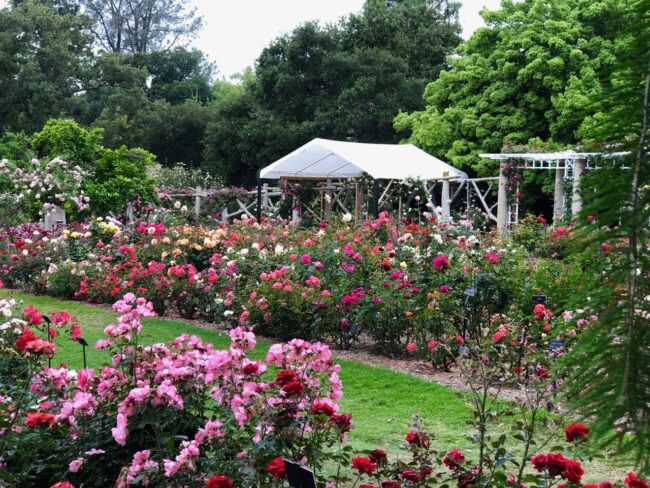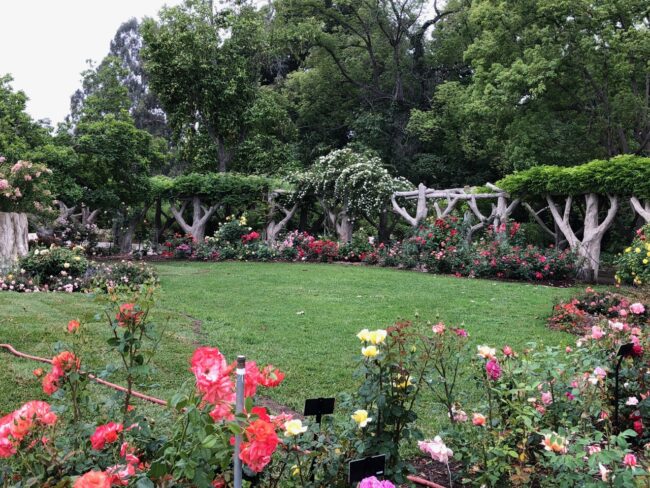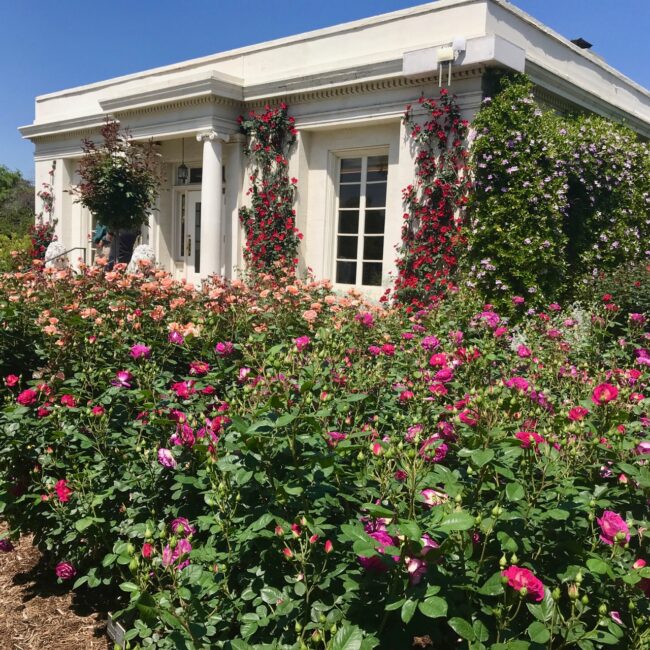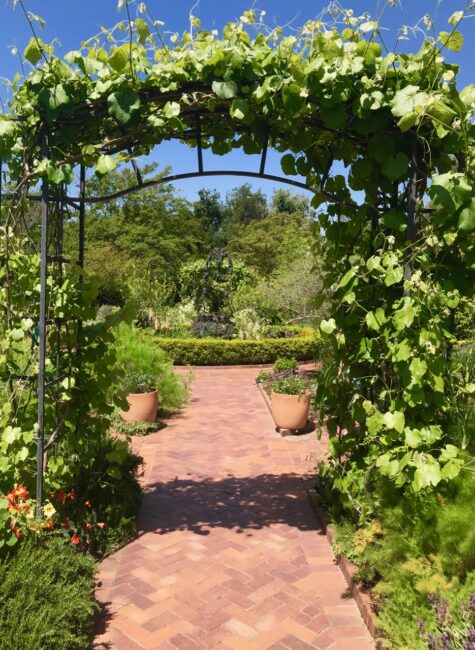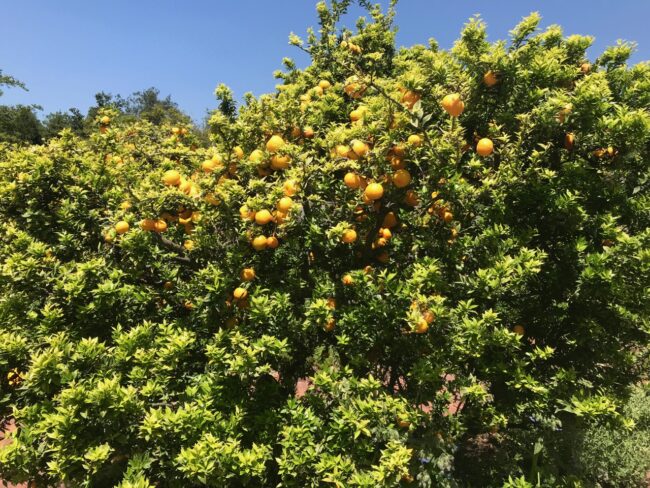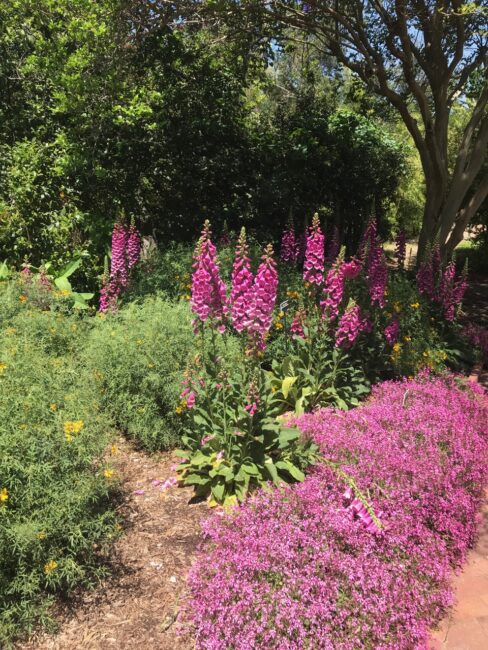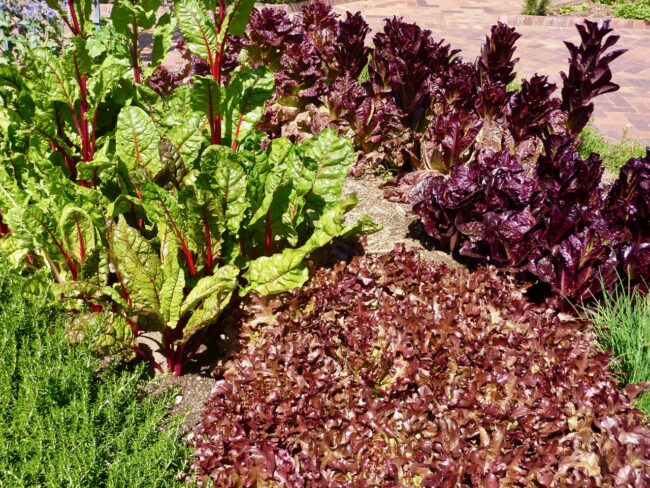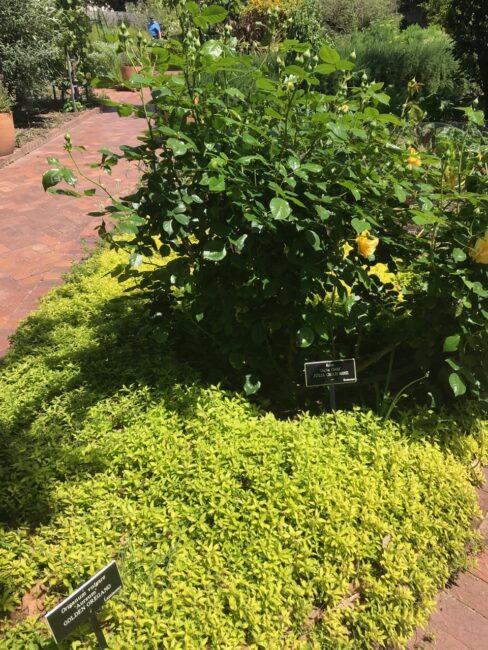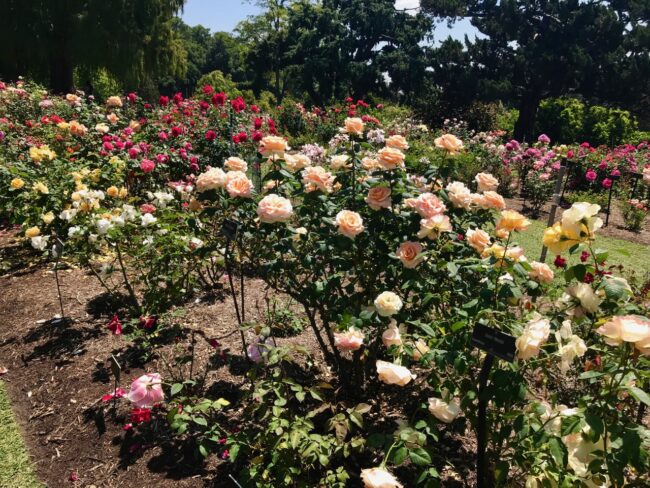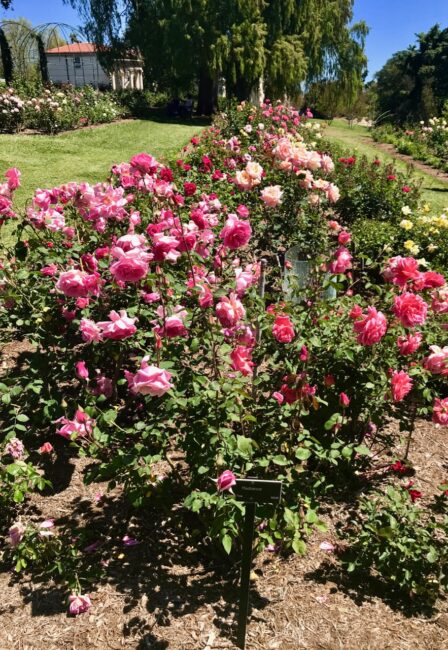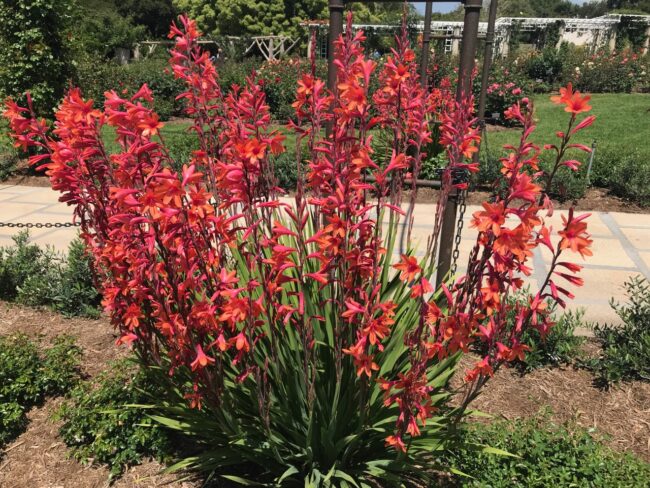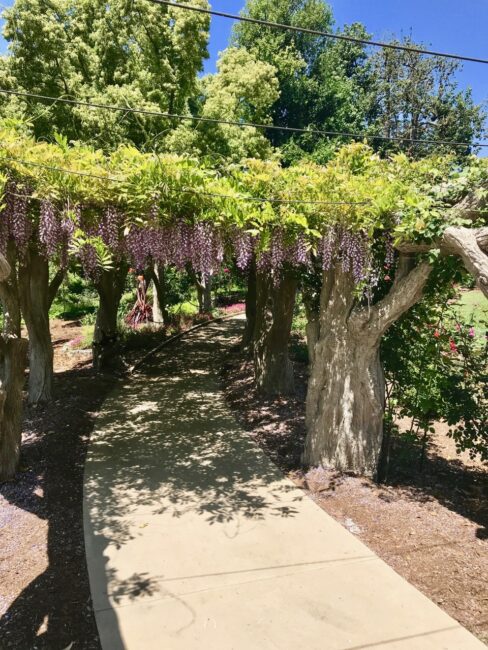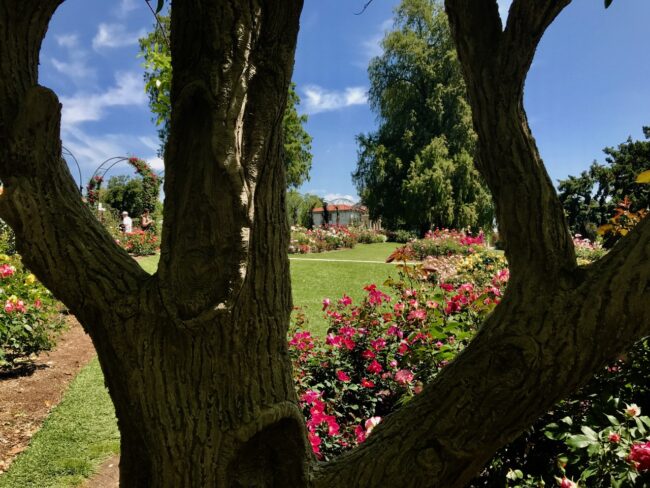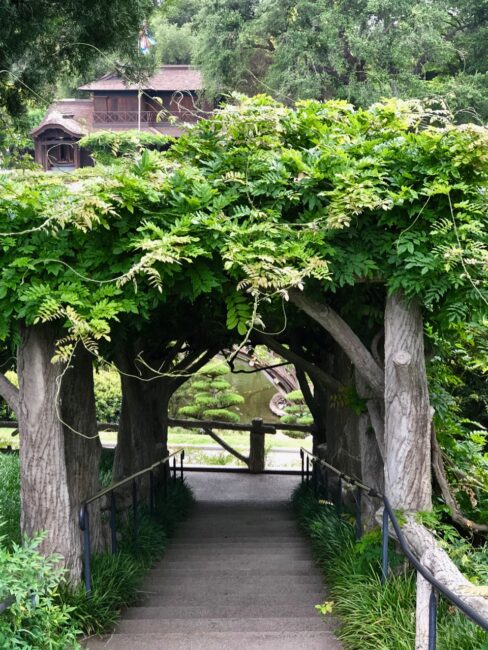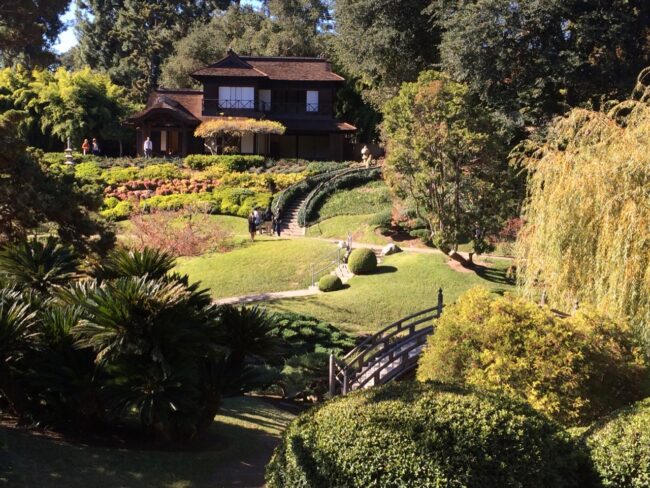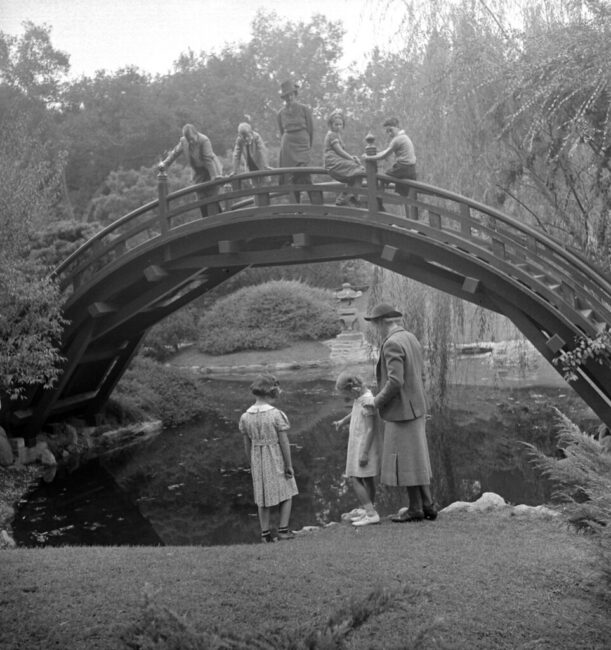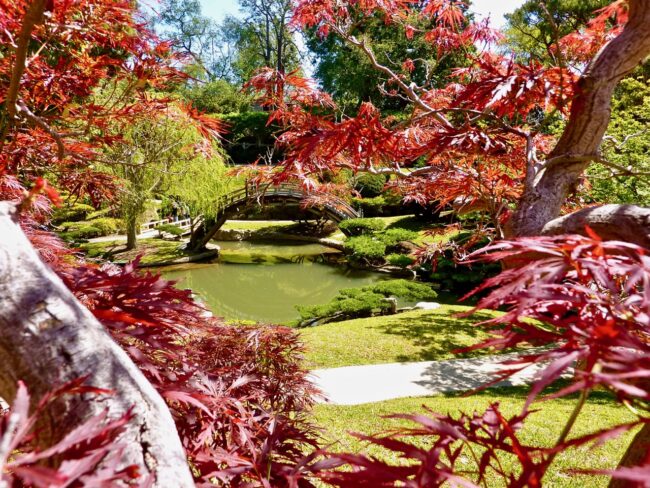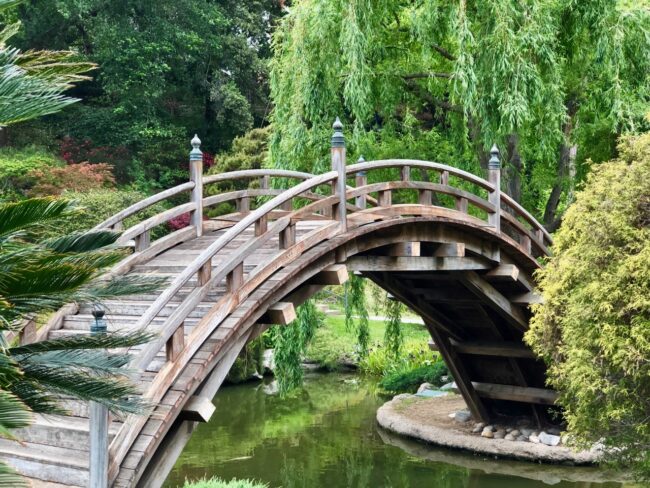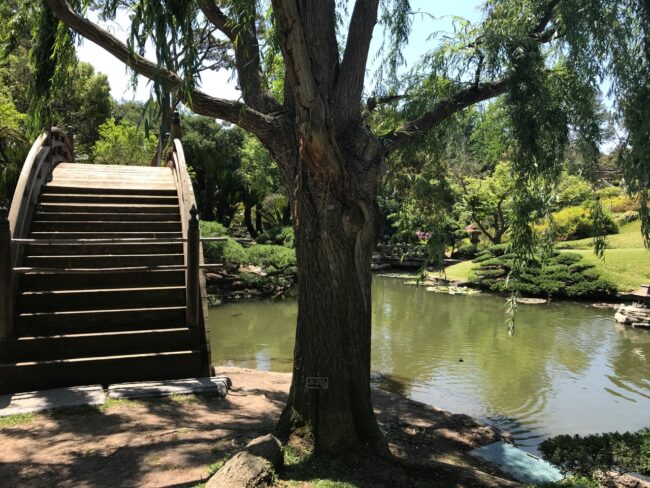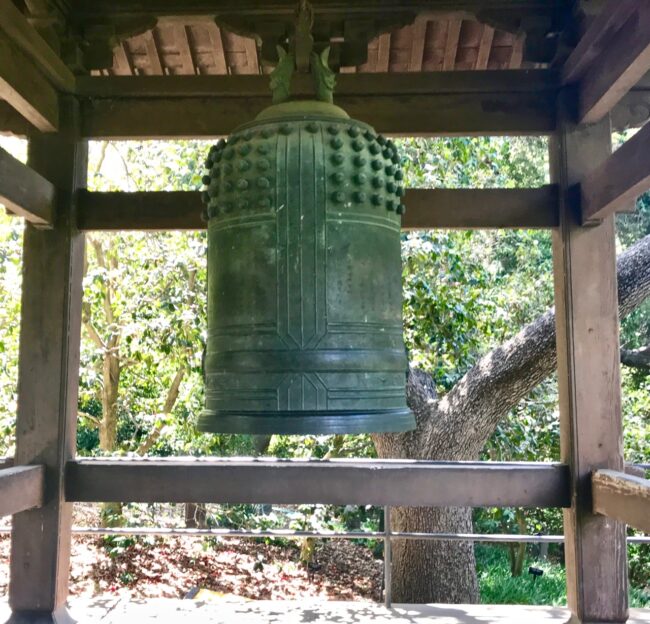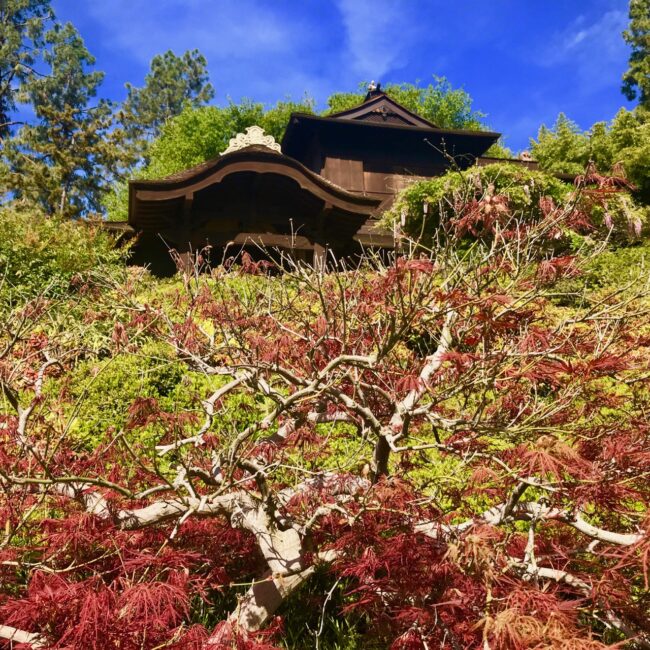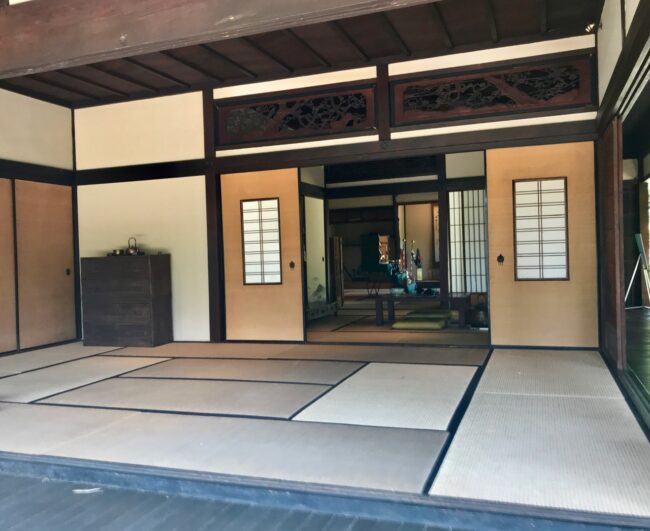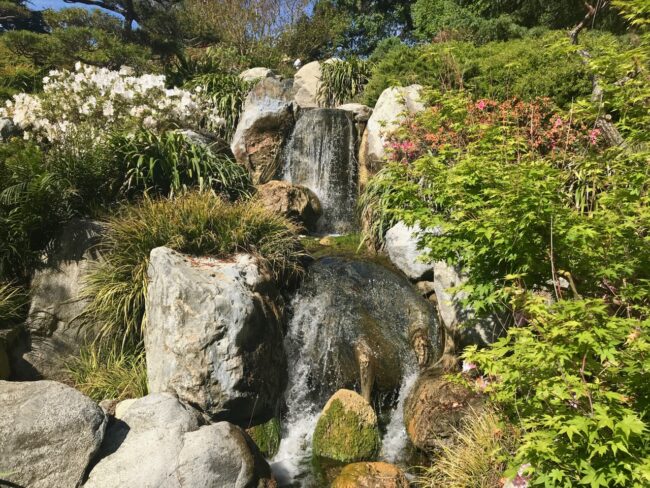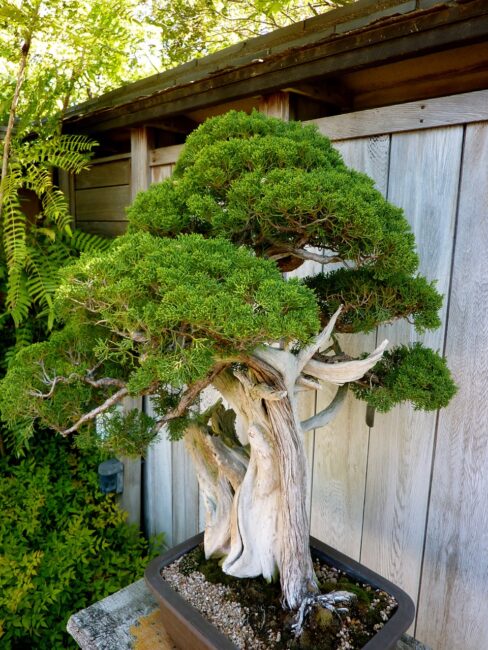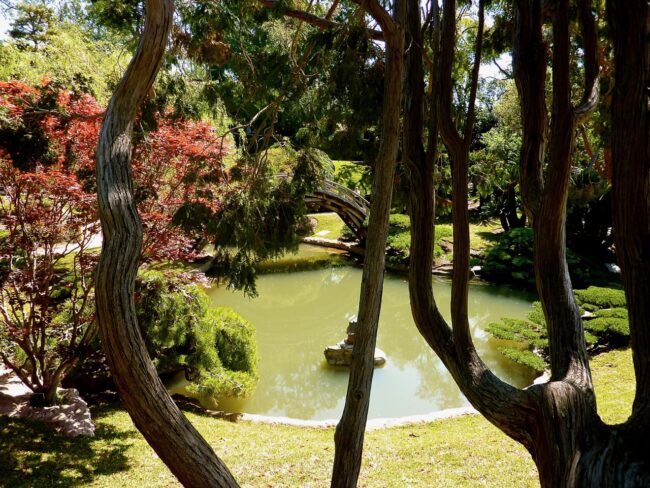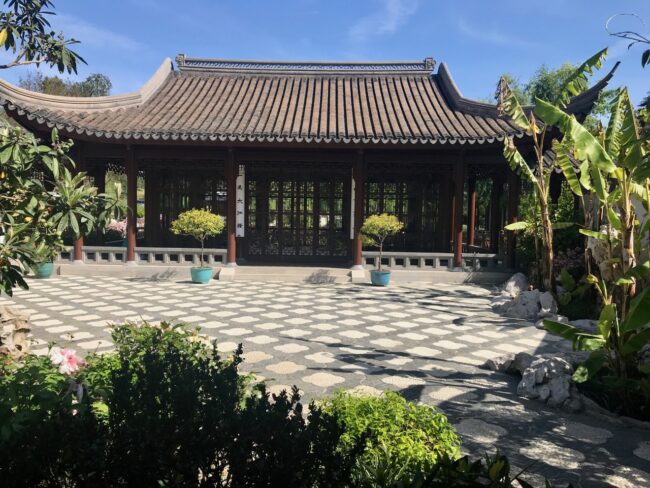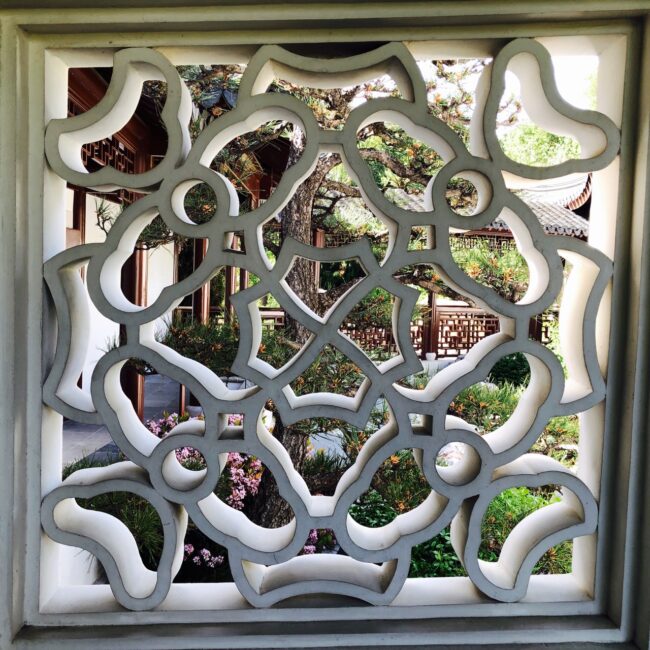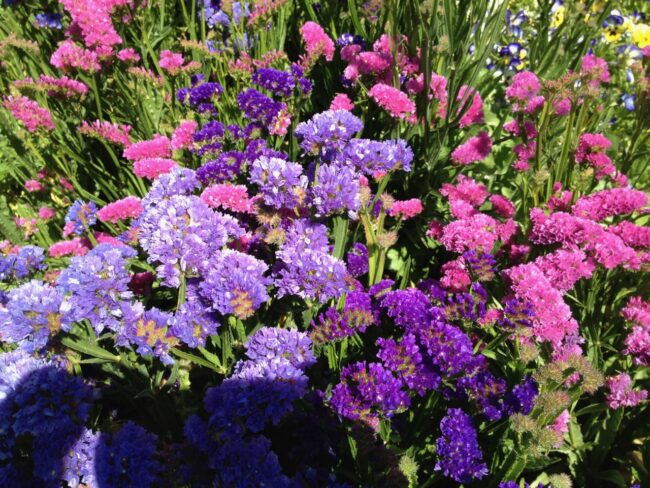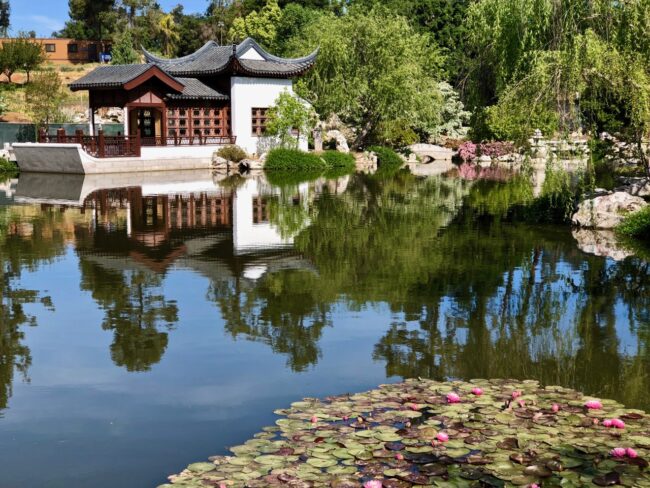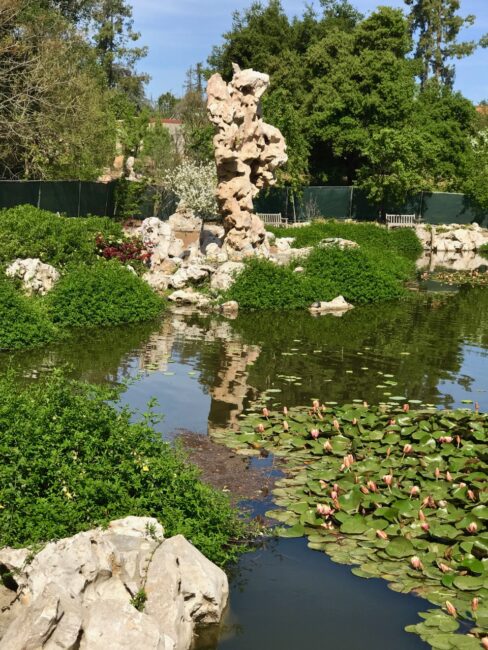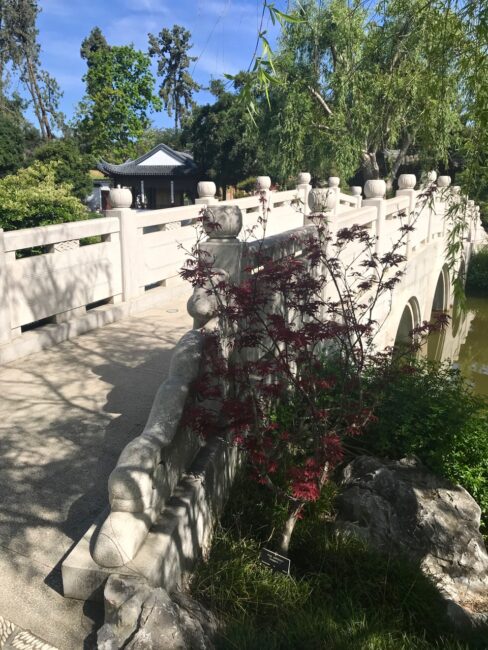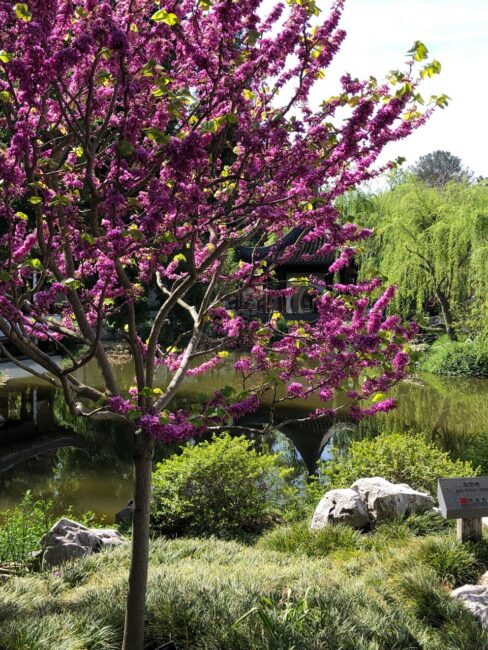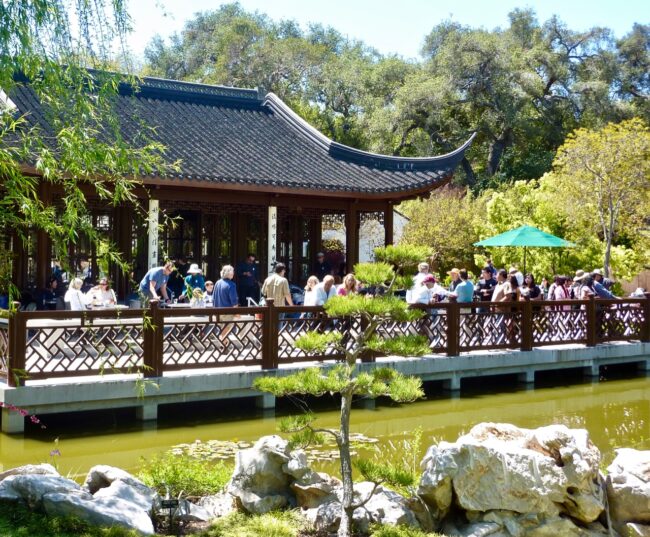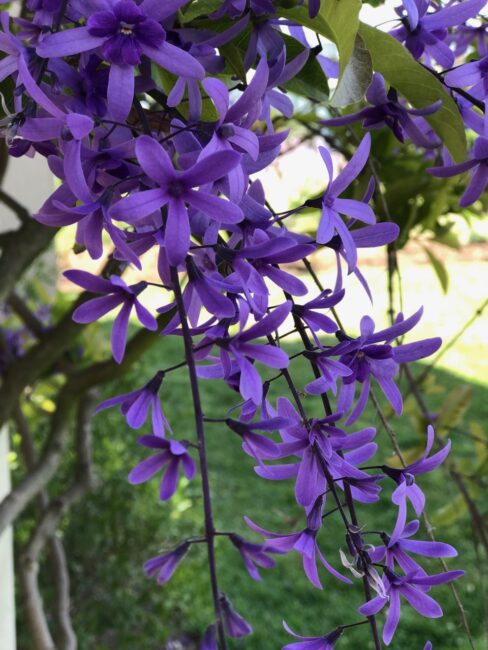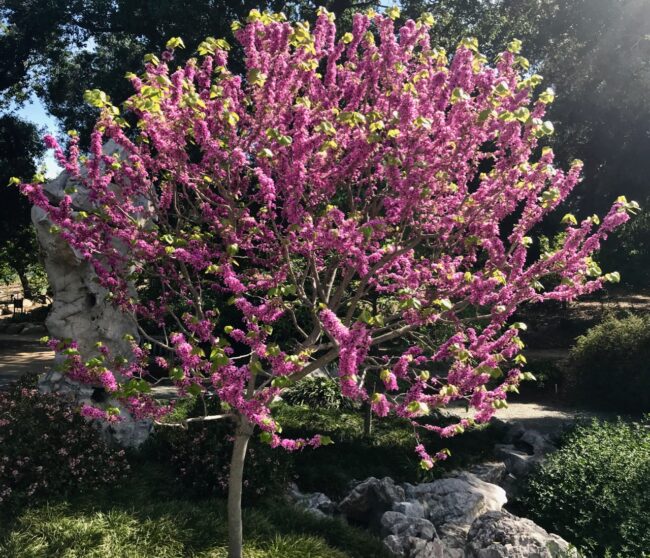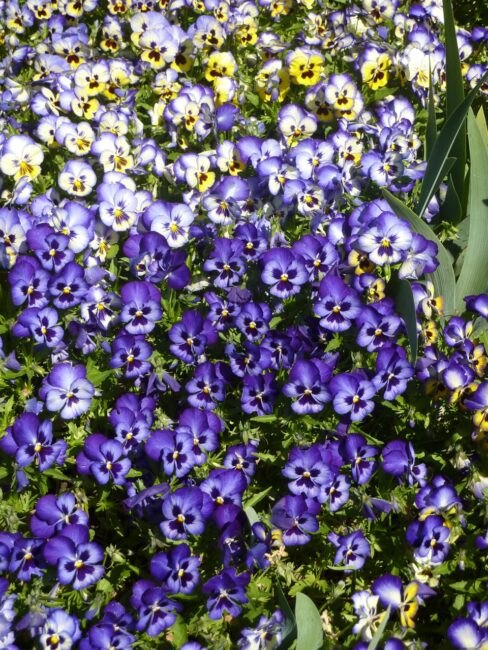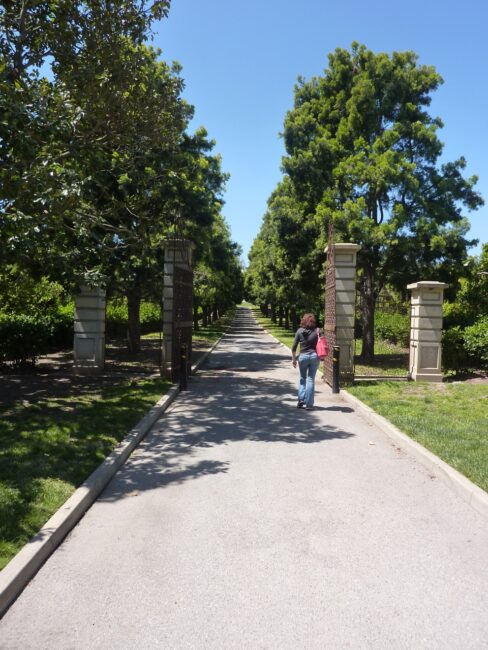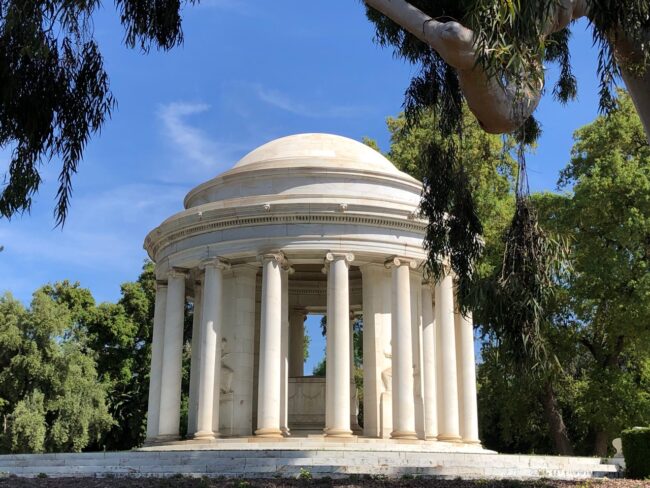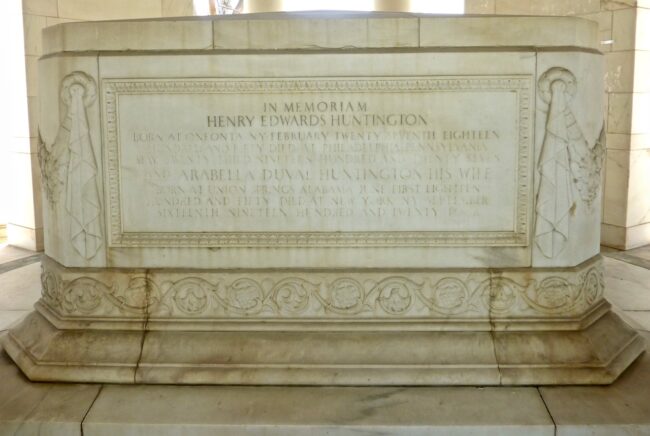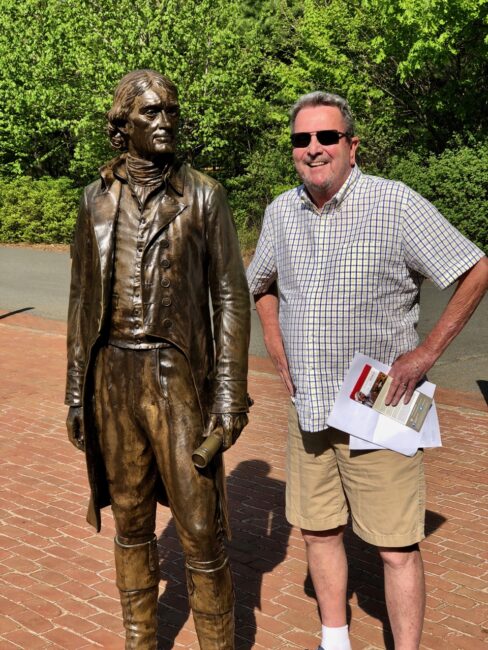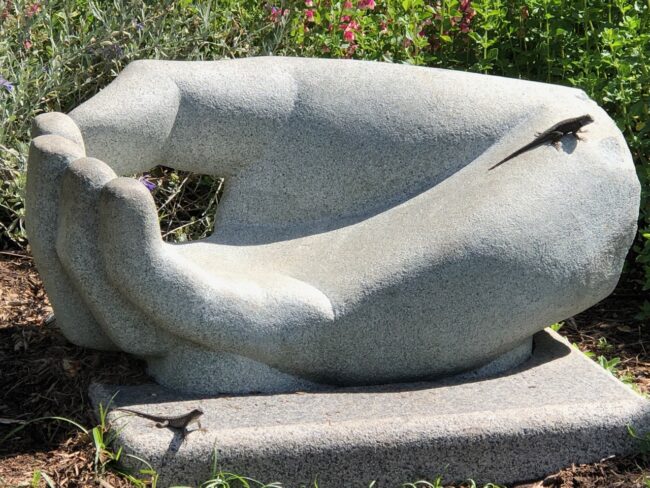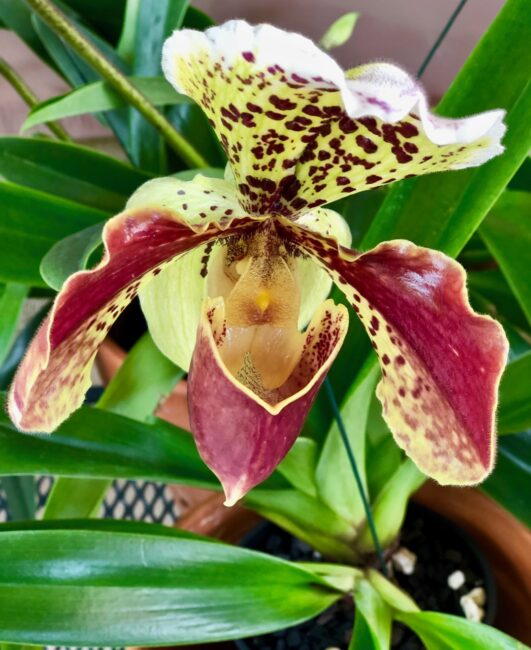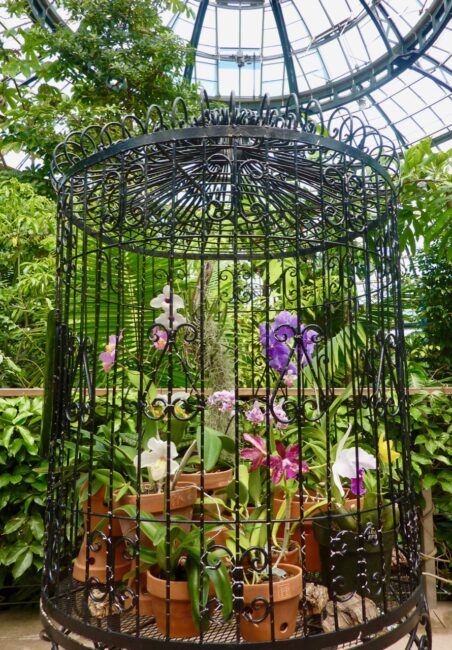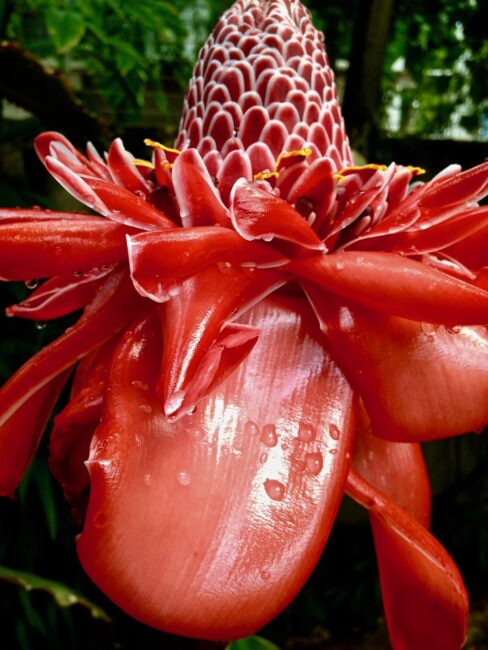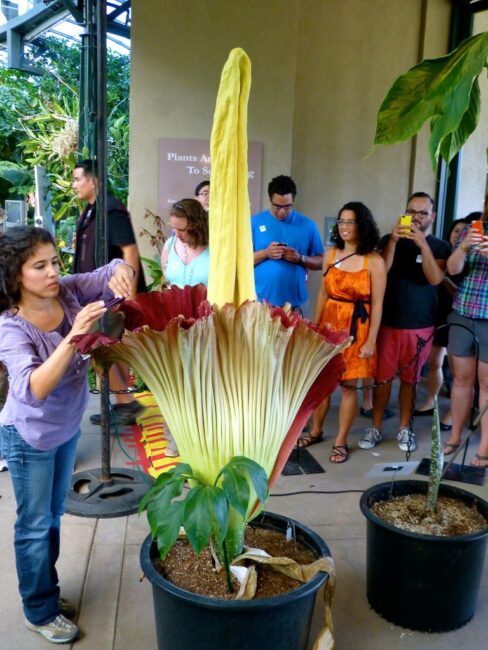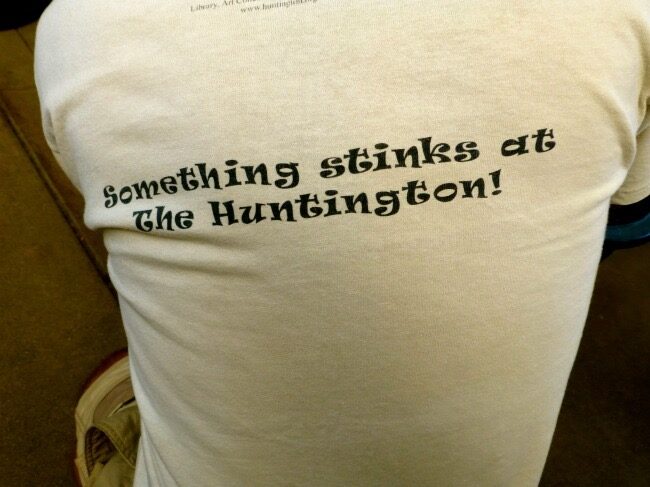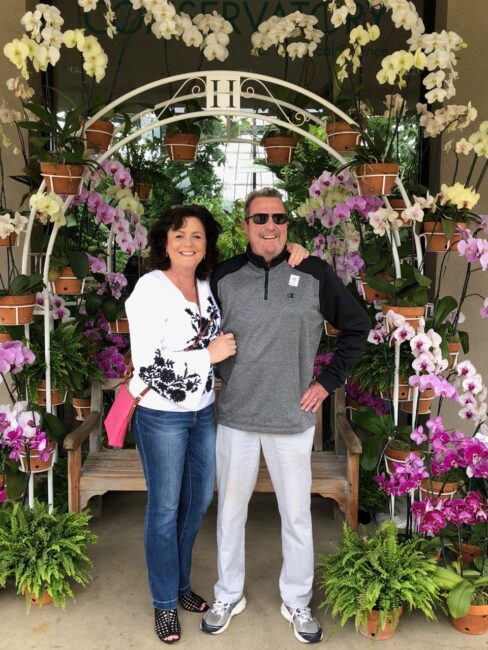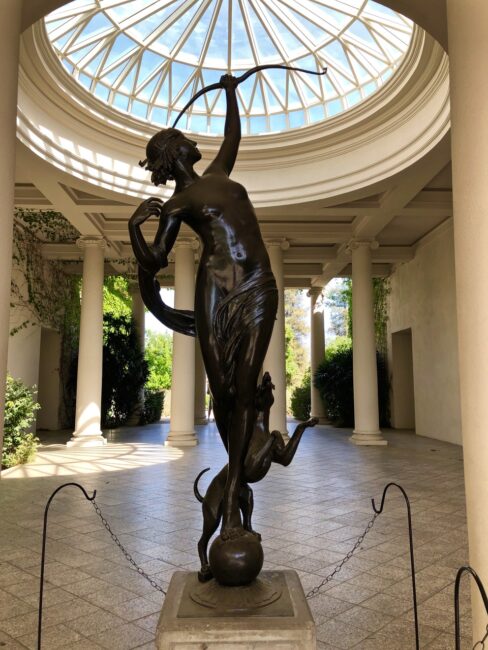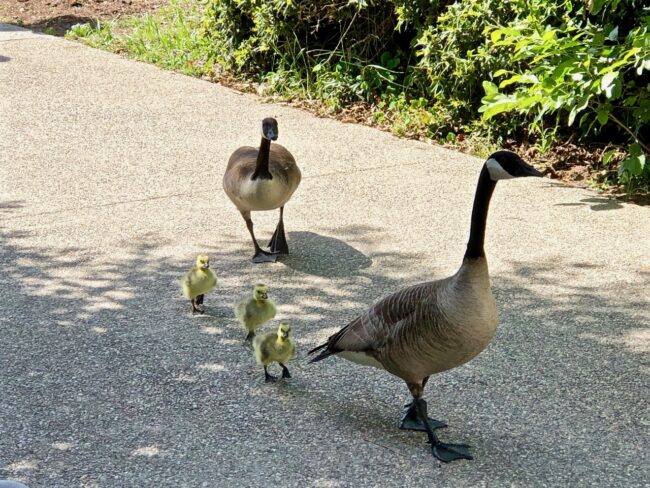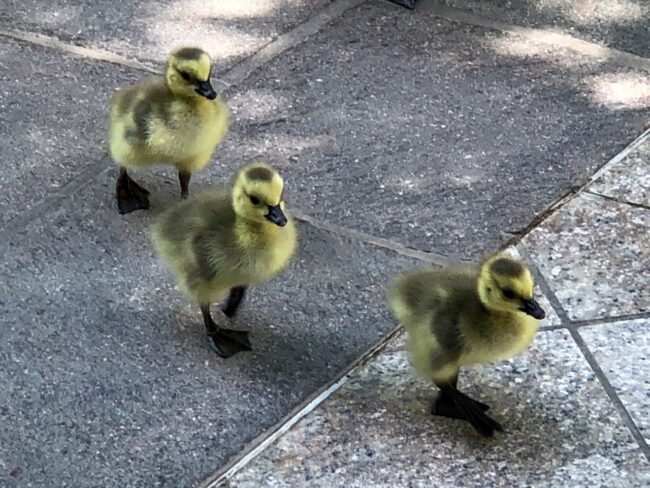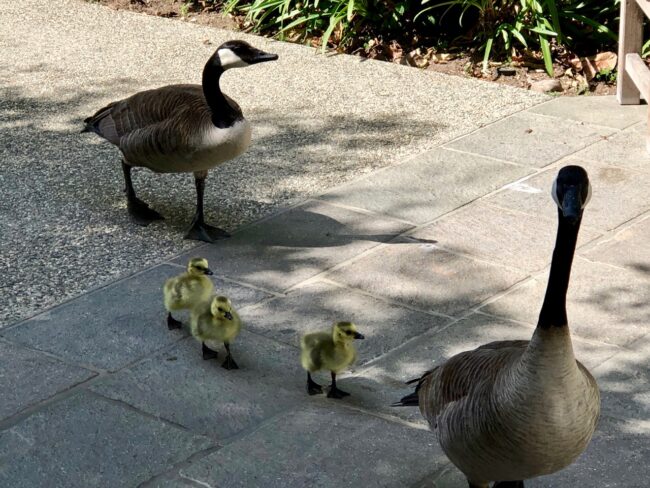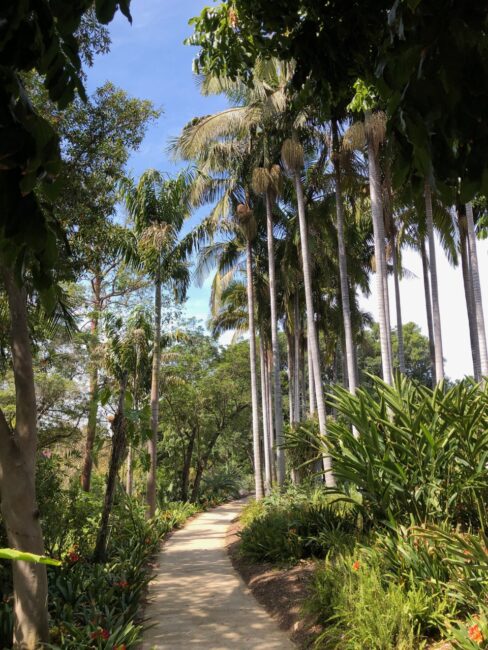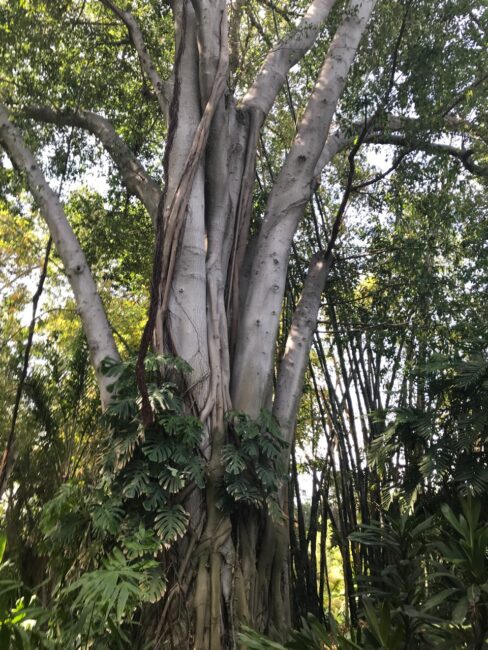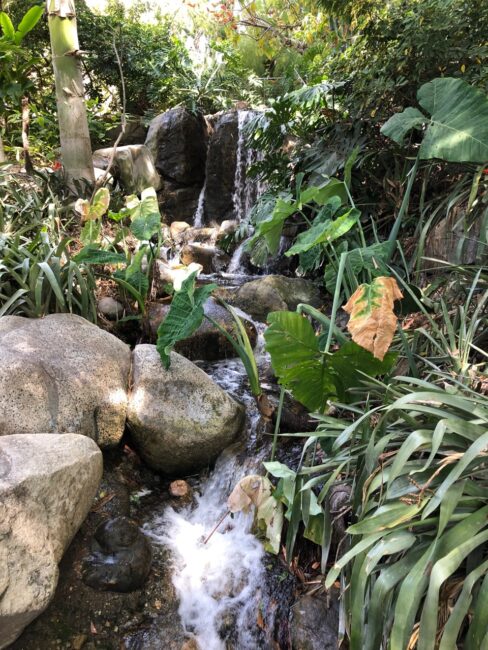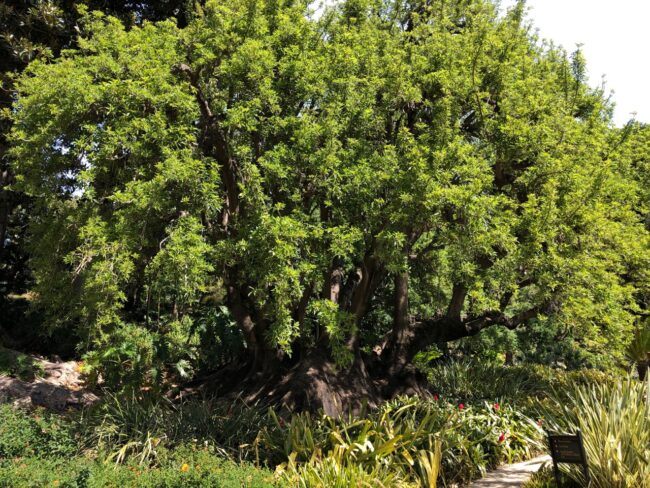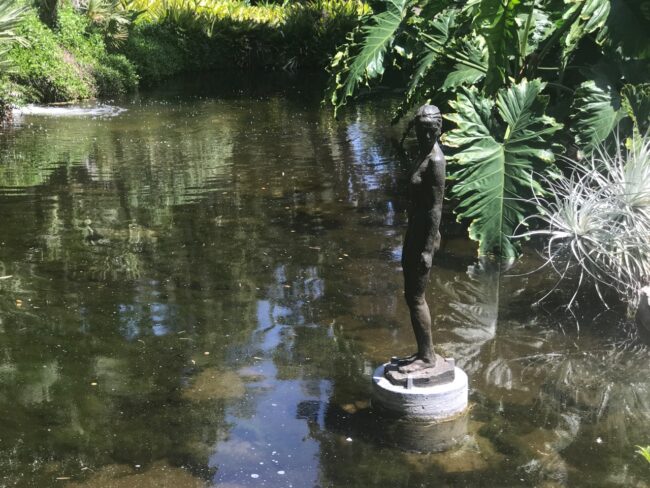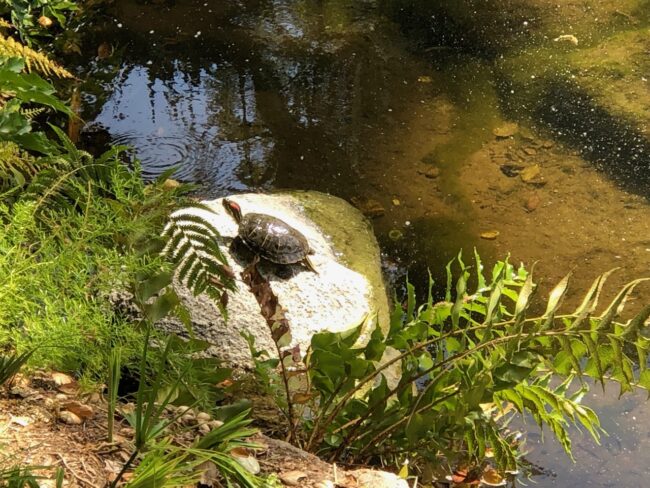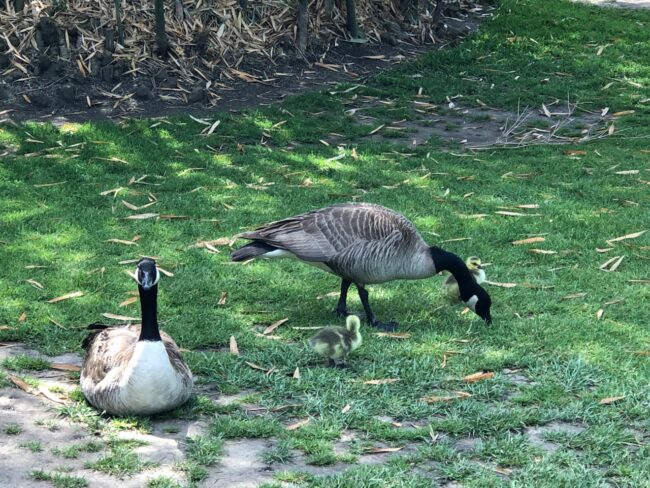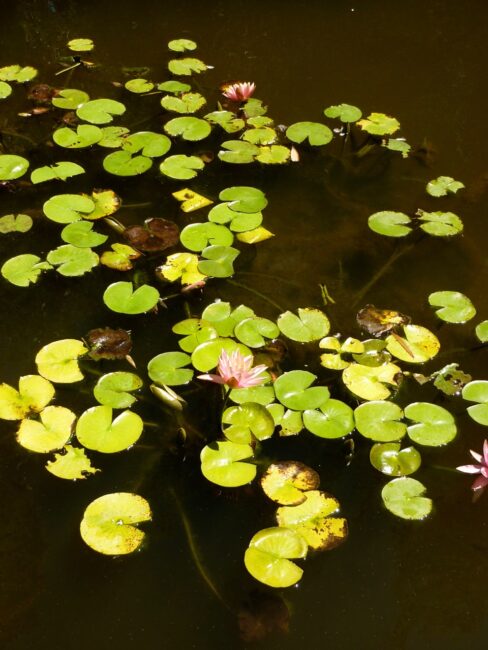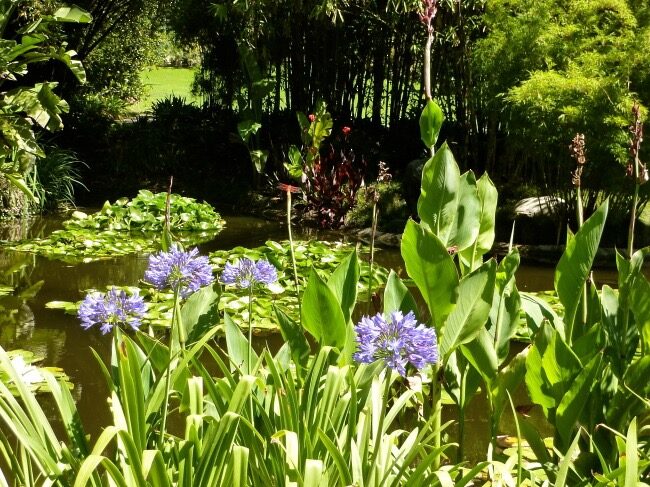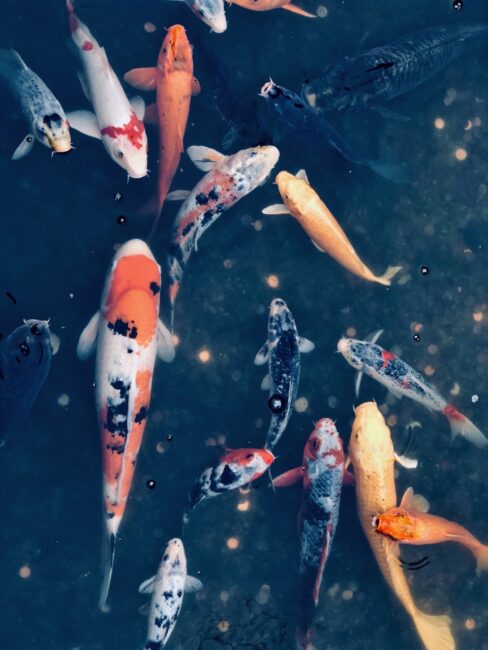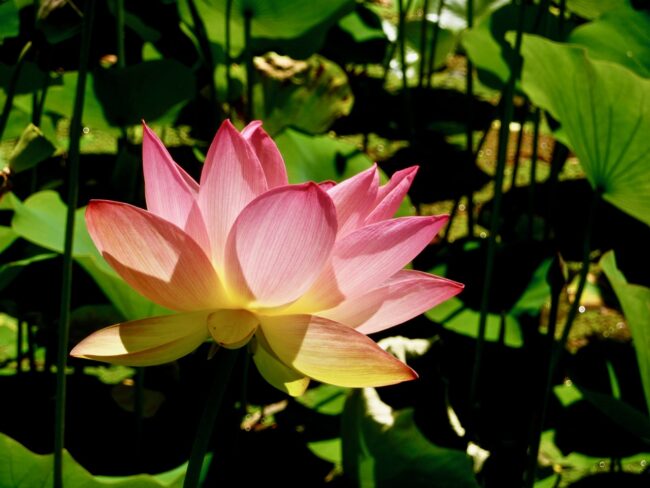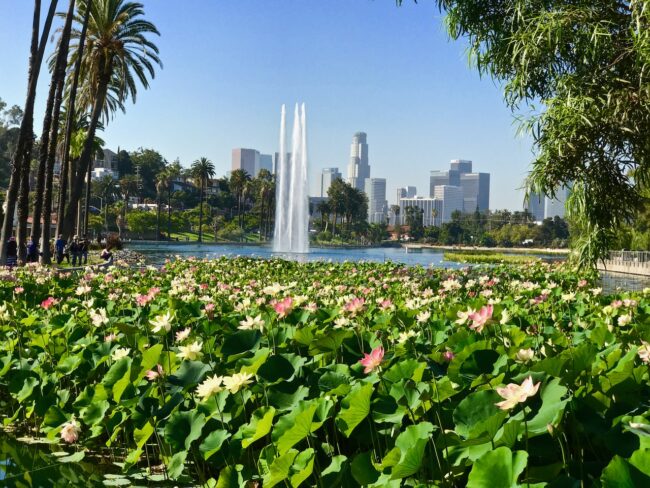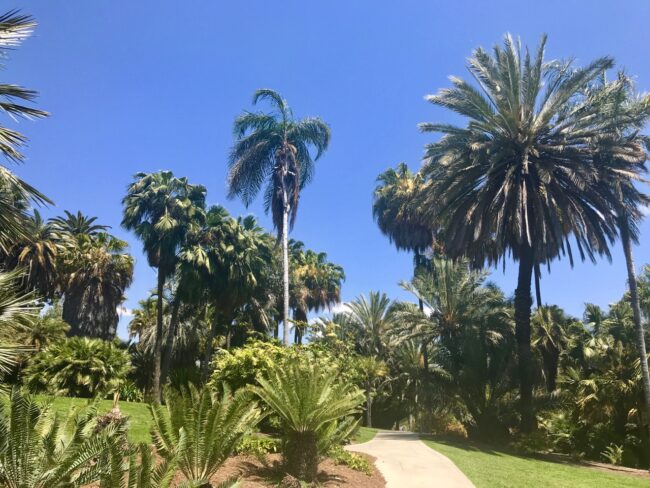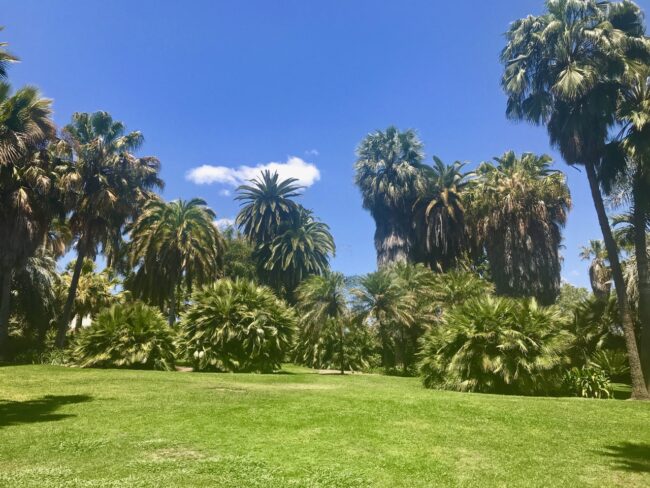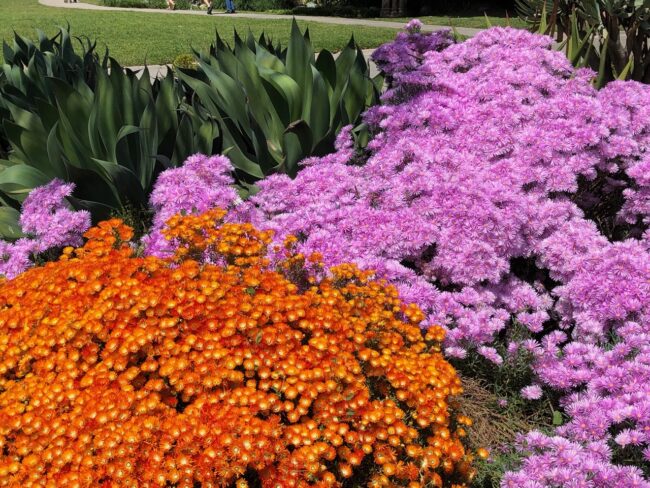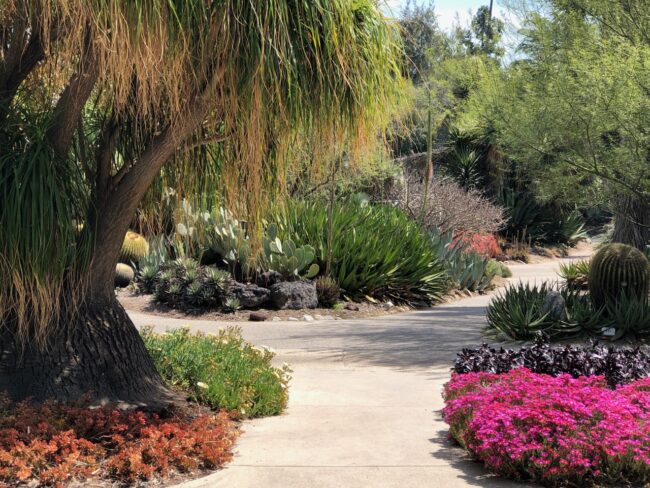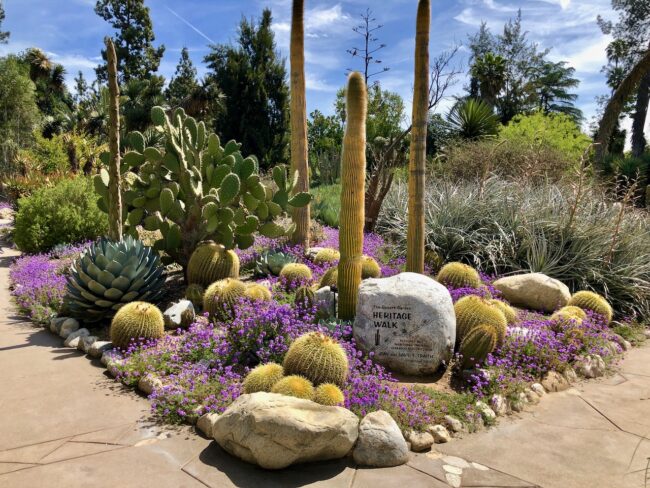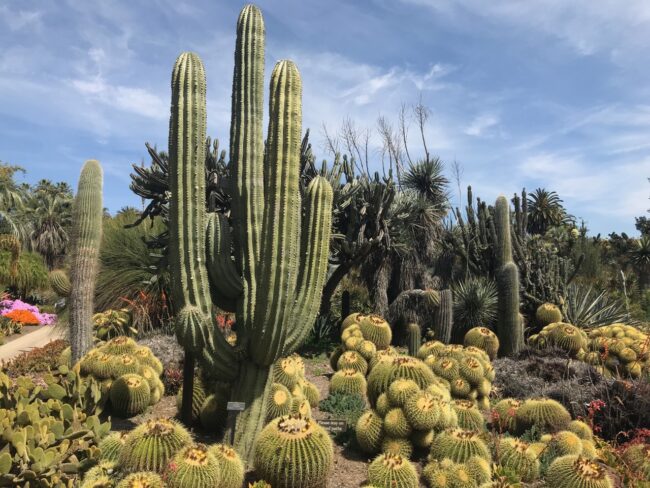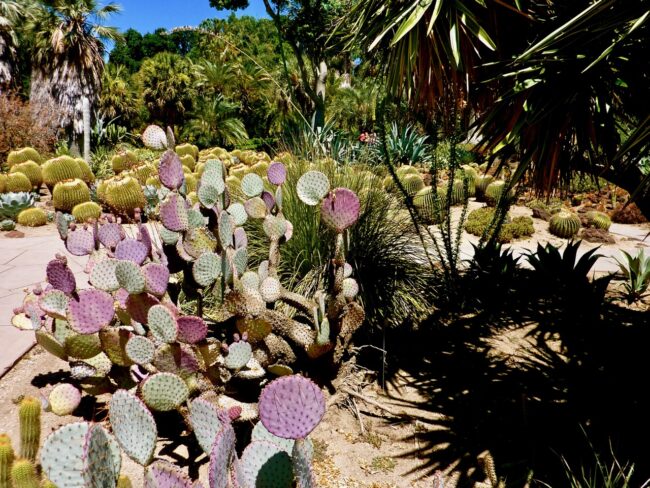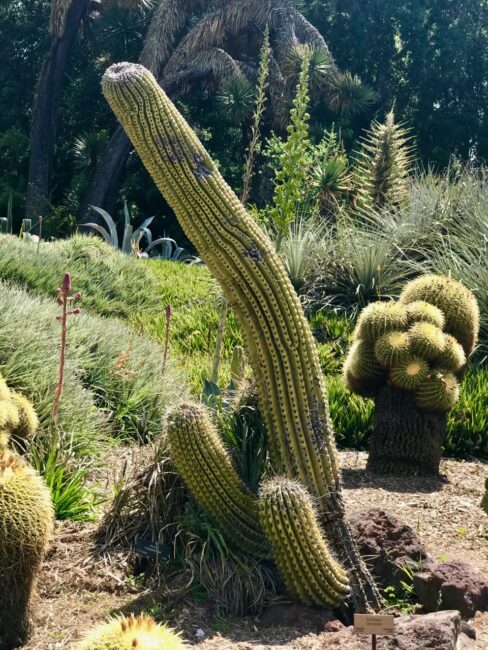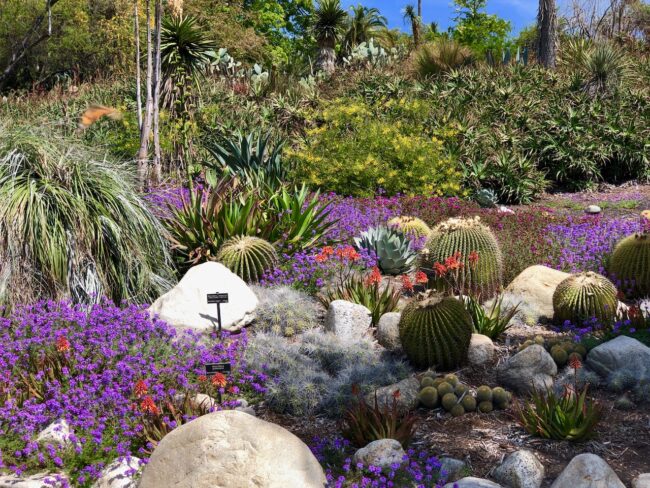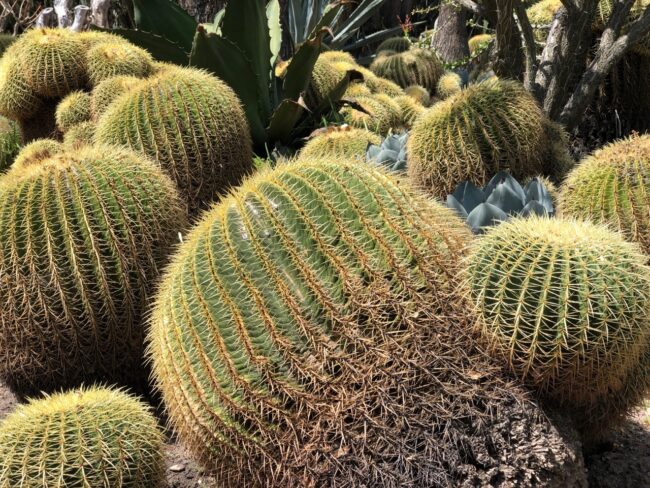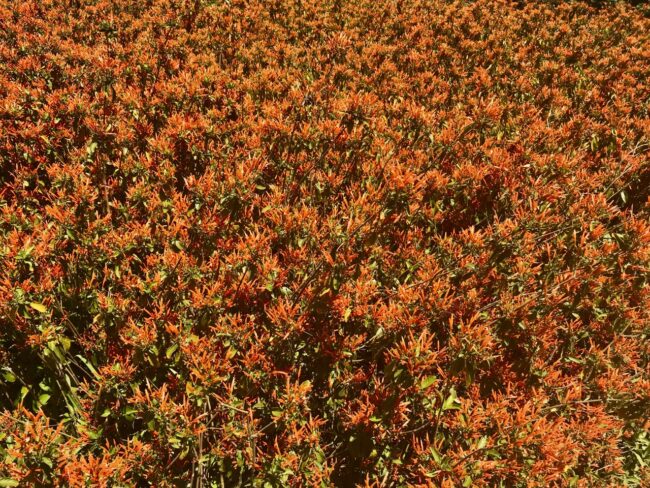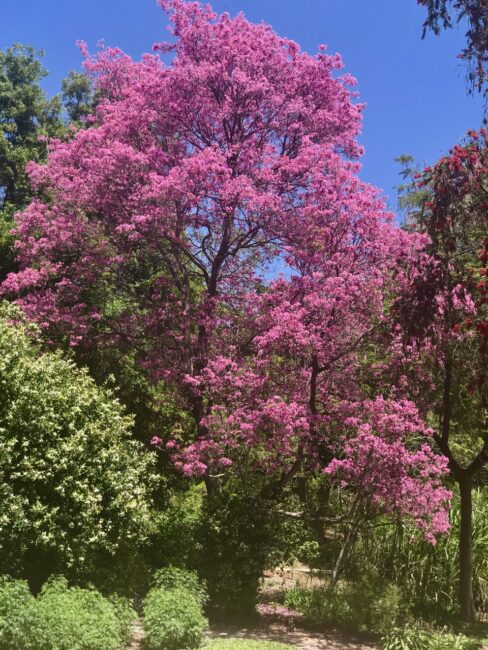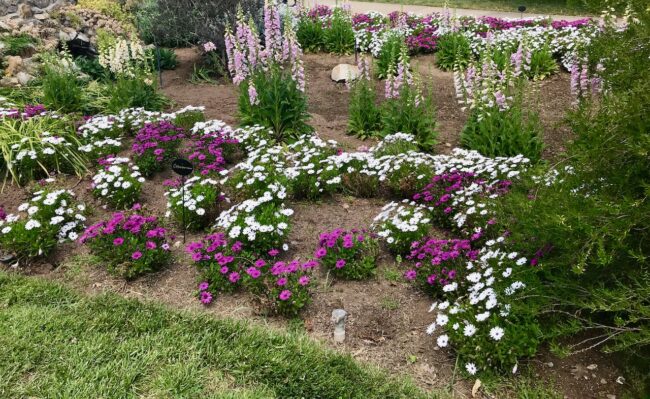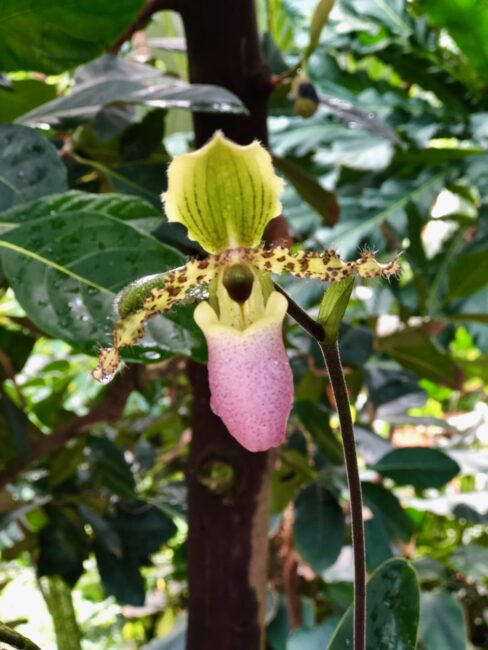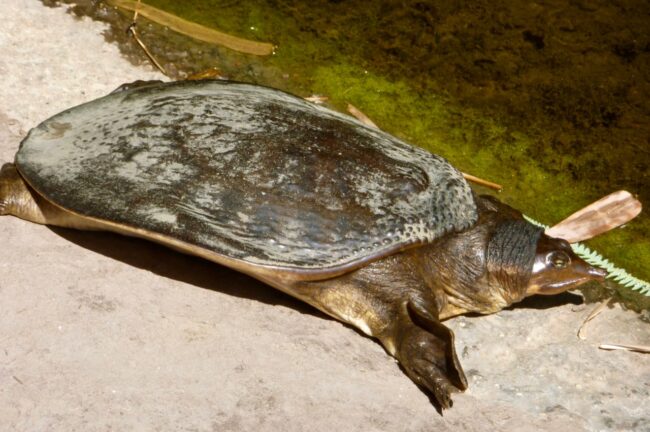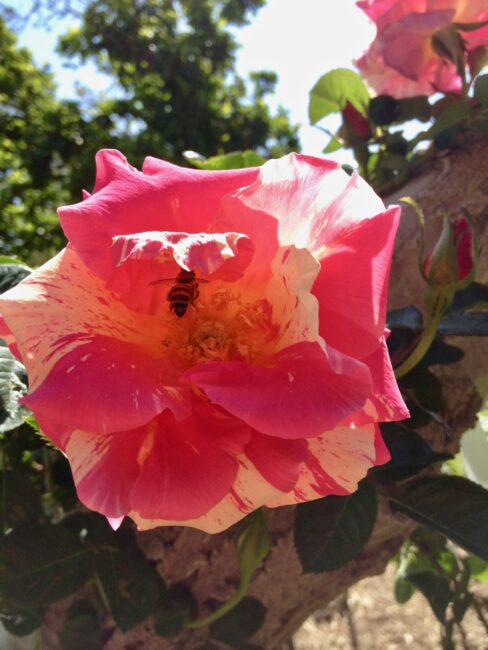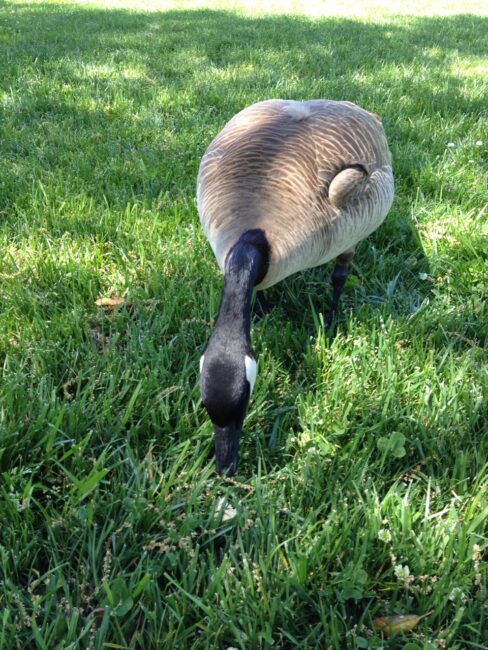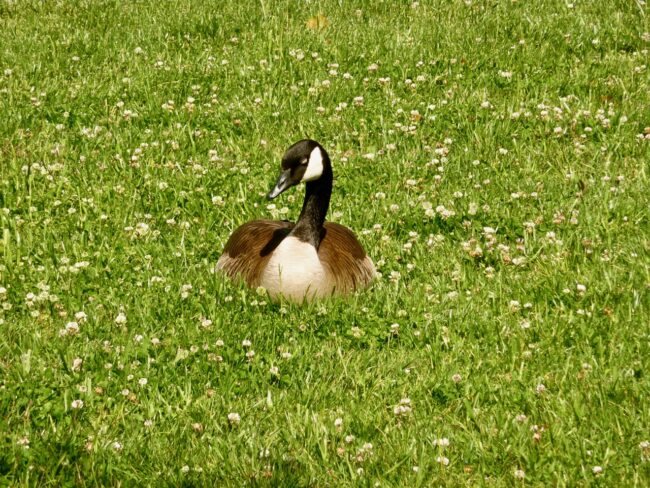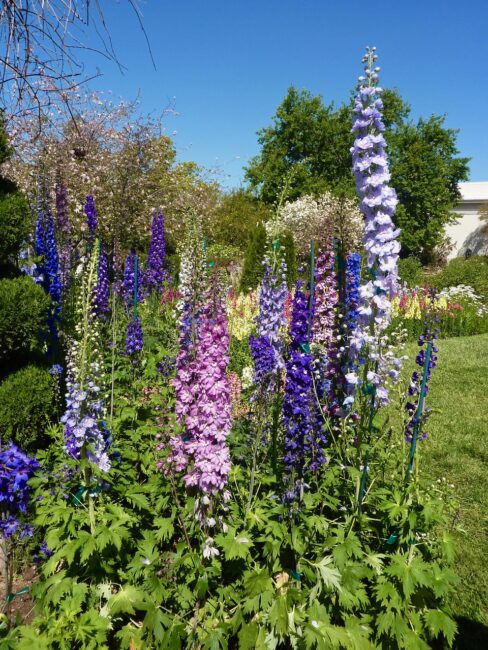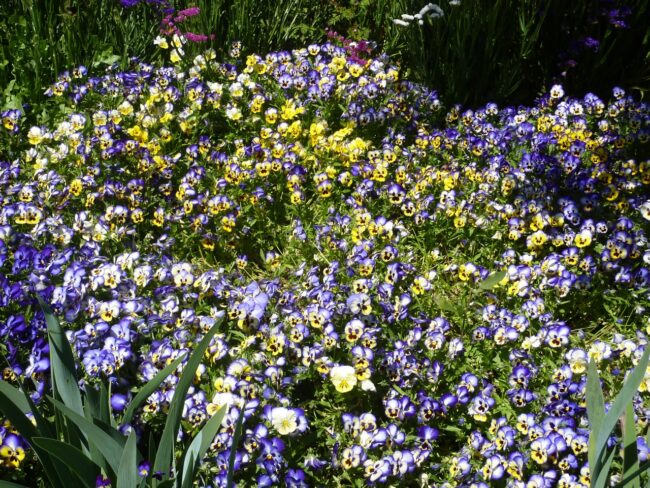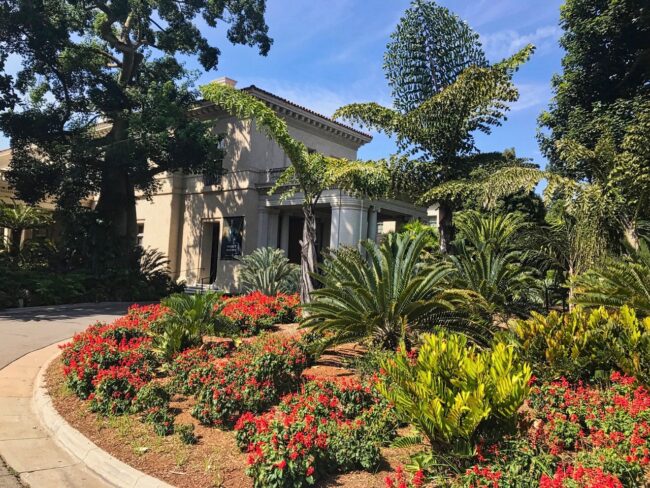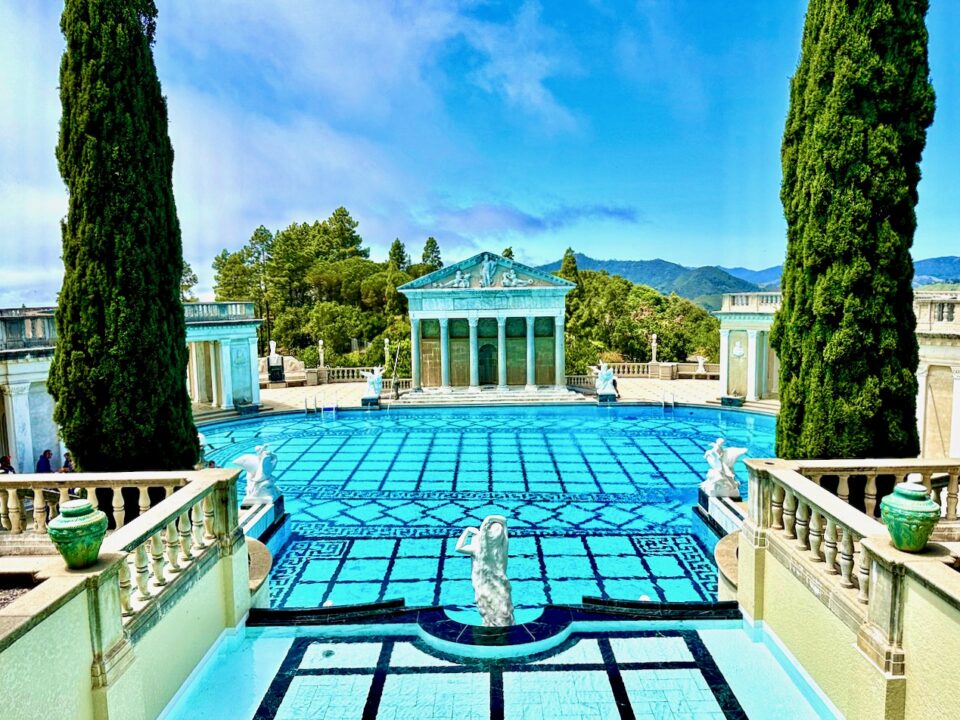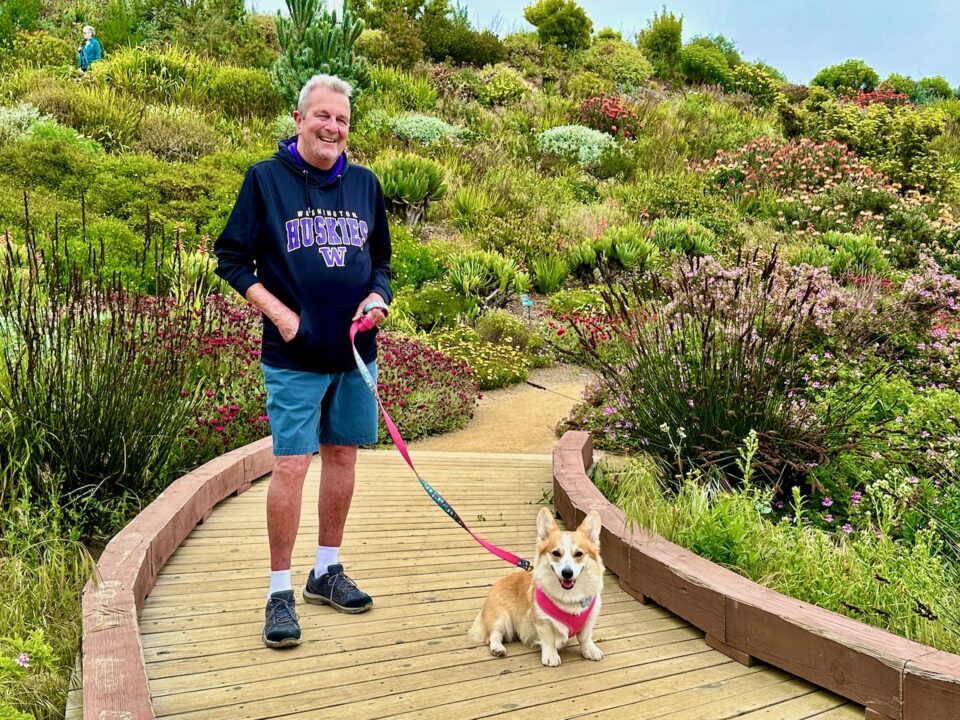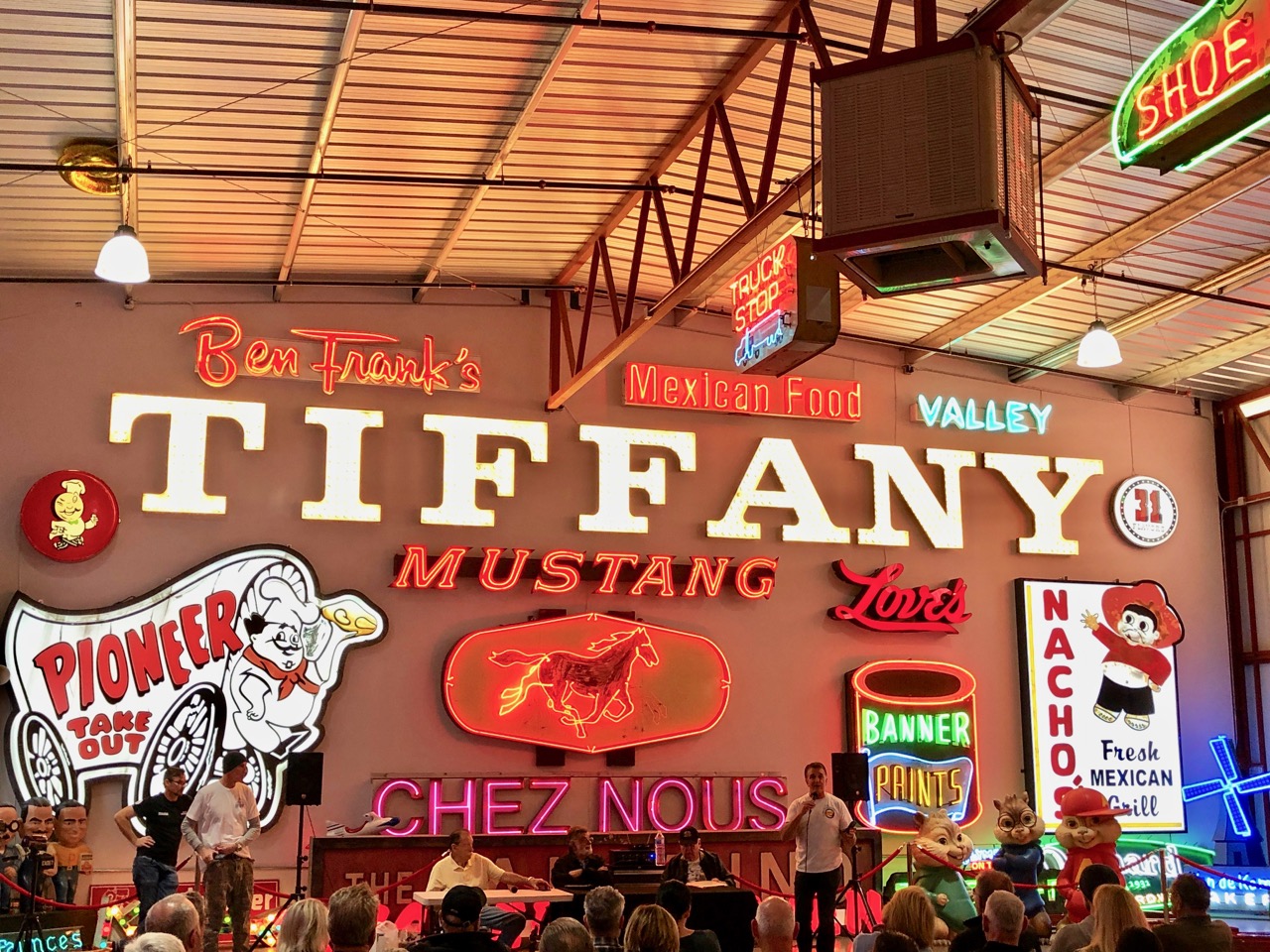
Valley Relics Museum – Van Nuys
April 3, 2019
Grace Cathedral – San Francisco
May 28, 2019The Indoor/Outdoor Museum Experience
Huntington Library, Art Collections, and Botanical Gardens (Garden Edition) – San Marino
Last Visit: March/April 2019
With the Huntington Library, Art Collections, and Botanical Gardens in San Marino (just south of Pasadena) celebrating its 100th anniversary in 2019, I thought it would be a good time for Travels With Mai Tai Tom to revisit what I consider one of the greatest museums not only in California but the world. It helps that we’re Huntington members because that way we have photos of nearly the entire complex from our numerous visits.
There are a lot of things I appreciate more as an adult than I did as a kid. They include Mozart, a good bottle of bourbon (well, I didn’t drink bourbon as a kid) and an excellent museum located virtually in my backyard. As a youngster, the gorgeous gardens at the Huntington Library were just a pretty cool place to play an extended version of hide and seek from my parents (who I think were happy not to find me at times).
The Huntington was founded in 1919 by Henry E. Huntington, a businessman who built a financial empire that included railroad companies, utilities, and real estate holdings in Southern California, and his wife Arabella (Huntington’s second wife, who was well known in both Europe and New York). At one time, she was described as “the richest woman in the world,” and her story is an interesting one.
Huntington was quite renowned during his life, so much so that 40 miles south of San Marino the town of Pacific Beach was renamed to Huntington Beach. The Huntington Beach Company, now the Huntington Company, was the primary developer of the city and is still a major land-owner in Huntington Beach.
When Henry Huntington purchased what was then the San Marino Ranch in 1903 ($225,000), it was a working ranch with citrus groves, nut and fruit orchards, alfalfa crops, a small herd of cows and poultry. Huntington and his superintendent, William Hertrich, who was introduced to Huntington by George Patton Sr.), worked together to mold that ranch into a botanical garden featuring rare and exotic plants. Huntington created the small city of San Marino to protect his investment. Hertrich loved purchasing rare and exotic plants, and interestingly his most significant competitor in the area was oil tycoon Edward Doheny, who Tracy and I learned about a couple of years ago when we toured Greystone Mansion in Beverly Hills (photos from our day at Greystone below).
In 1919, Henry and Arabella signed an indenture which transferred their San Marino estate with its collections of art and books, to a non-profit educational trust. (In a 1927 Atlantic Monthly article, Huntington was described as the “greatest collector of books the world has ever known.”)
It was opened to the public in 1928. Neither Henry (who died in 1927) nor Arabella (who passed away in 1924) were around to witness the opening. Today, the Huntington attracts 750,000 visitors a year. The botanical gardens cover 207 acres (120 landscaped) that include 14,000 different varieties of plants and flowers.
This installment will include all the gardens, while the next post will cover the art galleries and the Library. (The photos are an accumulation of ones we’ve taken over the past few years, but about 90 – 95% of them are from March and April 2019.)
A new visitor center was opened in 2013, and as you stroll down the olive-lined allée (the California Garden) toward the entrance, you pass by beautiful drought-tolerant flowers and foliage where you can pause for a moment in one of the “Hedge Rooms,” complete with tables and benches. (Resting might be something you need to do after enjoying a day of walking miles around the expansive property.)
The first garden you see upon entering is the Celebration Garden. Such plants surround the rectangular pool of recirculated water as Spanish lavender, kangaroo paw, California poppies and more.
As you gaze out at the nearby foliage, you’ll see this will be quite a colorful experience.
Listen carefully, and you might hear some strange sounds emitting from the area near the end of the Celebration Garden. On your left is a shell-shaped structure, which is NASA’s Orbit Pavilion. Step inside to hear the sounds made by the International Space Station and 19 Earth Science satellites. Installed at the Huntington in 2016, this traveling exhibit was only supposed to be here for a short time, but it is now extended until September 2, 2019.
Walking back toward and past the Celebration Garden, on the right stands the library with its fascinating, historical and educational collection, which we will visit in the next installment.
A little further on the left stands what was once Henry and Arabella’s Beaux-Arts mansion. It now houses The Huntington Art Gallery of European Art (including the famous Gainsborough paintings, Pinkie and Blue Boy). We’ll go there in the next post also.
Near the gallery are sculptures of Bacchus and Neptune. I assumed Bacchus turns Neptune’s water into wine.
A small pathway takes you into the Camellia Garden. The 80 types of Huntington camellias have their big bloom in January and February, but a few stuck around for our March and April visits this year. It’s no surprise that camellias flourish here. They were Hertrich’s “passion.” He served as Superintendent of the gardens from 1903 to 1948.
Speaking of sculptures, as we walked along we came upon the North Vista (which I have always called the Sculpture Garden).
Not surprisingly, there is a multitude of 18th-century statues lining the extended, rectangular grassy area, where authorities once admonished me for throwing a frisbee as a youth.
I guess they frown on potential statue decapitation.
The 17th-century Baroque Fountain has a unique story. Huntington purchased it in 1915. From the Huntington website, “It was shipped from New York in 48 boxes that filled an entire railway car. Oddly enough, the fountain arrived without assembly instructions and with a few extra pieces. It eventually was installed five years after the 1916 completion of the main house.” That story reminded me of the bookshelf I once purchased from IKEA.
We wandered into the Shakespeare Garden, where my favorites, the delphiniums, had only recently been planted. By mid-May, they’ll look something like this.
I was disappointed, but Tracy said, “You’re making much ado about nothing. As you like it, we’ll come back in May.”
Snapdragon … Pop!
We admired the Crabapple trees and the Chinese Snowballs (no throwing, however).
An American flag towers over the Shakespeare Garden, although the Bard died four years before the Pilgrims arrived. Similar to the pilgrims, the flagpole arrived in Redondo Beach by ship from the Pacific Northwest in 1909. Made from a single trunk of a Douglas fir, upon landing, it wove it’s way through the streets of Los Angeles on top of two horse-drawn wagons.
We entered the adjacent Rose Garden (no sign of Lynn Anderson), and before admiring the roses, which were beginning to bloom, we took a quick look at a Tabebuia “Apricot” tree (which is a trumpet tree … trumpet trees don’t have fruit) that I want in our front yard. I asked whether we could transplant this tree, and the docent double-checked whether I was really a member.
Sparkle and Shine roses greet you upon entering the Rose Garden, created in 2008. How much did Henry and Arabella like roses?
According to the website, “Household records indicate that in one year alone more than 30,000 flowers were used in these massive bouquets, 9,700 of which were roses.” I hope Tracy doesn’t take that as a challenge (we currently have 76 rose bushes planted in our garden).
For the centennial, there is a ”Huntington’s 100th Rose,” which was just beginning to show off its colors.
No matter whether in February or April, the recently restored Tempietto (aka small Renaissance temple) entitled Love, The Captive of Youth, always brings a smile to me.
Not coincidentally, the flower garden surrounding it contains a bed of Passionate Kisses roses.
Love and the scent of flowers are prevalent in this three-acre garden containing 3,000 different plants and 1,200 different cultivars.
If tea is your bag, make a reservation to indulge in a High Tea at the Rose Garden Tea Room. I’ve heard prices for the High Tea are not steep.
Next, to the Rose Garden room, we entered the 1/2 acre Herb Garden.
There are fruits, vegetables, and colorful plants mixed in with the herbs. May is a great time to explore the Herb Garden when the colors really show up, and by the time you leave, you’ll be singing Parsley, Rosemary, and Thyme. I hear the sage duo of Simon and Garfunkel made a mint on that song.
Strolling back through the Rose Garden …
(hey, what are you doing in the Rose Garden?)
… we entered the Wisteria covered entrance …
…that would take us to the path to get down to the nine-acre Japanese Garden, an attraction that has been visited by 20 million visitors since its opening to the public. It was completed in 1912, 15 years before the Huntington opened to the public. The garden underwent an expensive ($6.8 million) renovation in 2011.
The first view of the Japanese Garden is always inspiring with its bridge (which you cannot walk across now but could in the 1930s) and sculptures interspersed among the beautiful foliage.
In May, this is what you can expect with Japanese Maples taking center stage. Gorgeous.
I’ve always loved this bridge.
On the left, as you walk down the steps to the garden is a bell purchased in 1914.
The house on the other side of the garden was shipped to Pasadena in 1904 and bought by Huntington in 1911.
There is also a ceremonial teahouse from Kyoto, plus collections of Bonzai and a Zen Court where you can touch and rub the suiseki (viewing stones). Walk through a little bamboo forest, and you’re at the waterfall.
Leaving the Japanese Garden …
… it’s a short and lovely walk to the Chinese Garden, one of the largest of these style gardens found outside of China.
This has become one of my favorite gardens.
The rocks in this garden come from Lake Tai, one of the largest freshwater lakes in China. I might call the Chinese Consulate to see if they can rename it, Lake Mai Tai. Where’s Trader Vic when you need him? It is such a tranquil place, and we always take a walk over the bridge.
In April we fell in love with this Redbud Tree.
Hungry? Stop by the Freshwater Dumpling and Noodle House, with a fabulous view of the lake.
There are lots of colorful flowers in this area.
Back in 2012, we told a museum employee we wanted to see the mausoleum where Henry and Arabella rest in peace. He replied, “Did you see that sign that said ‘Do Not Enter’?” We had because we had already entered. “Well,” he added, “that’s the way to the Mausoleum.” Being scofflaws at heart, Tracy and I followed his advice, and after passing groves of orange trees, we stumbled upon the mini Jefferson Memorial, or so it seemed.
There’s a reason it looked so familiar to us. The guy who designed this also designed the Jefferson Memorial. This is from the Huntington Library website: “Constructed of Colorado Yule marble, the mausoleum of Henry and Arabella Huntington overlooks the gardens from a knoll in the middle of the orange groves. It was a spot that Mr. Huntington loved.Mr. Huntington selected John Russell Pope, one of America’s most distinguished architects, to design the mausoleum in the form of a Greek temple. Pope believed the classic circular peristyle (or double colonnade) and dome were well suited to the nature of the Huntington grounds because it presented a perfect front from every angle, and was a combination of two perfect forms, the circle, and sphere. Pope later used a similar design in the construction of the Jefferson Memorial in Washington, D.C.” We returned in April 2019, and it looks like it’s in the process of being renovated.
Tom and I reminisced at Monticello in 2018.
Now it was time to walk (a long walk) to the “other side” of the Huntington where more gardens awaited. On the way, we passed by a Children’s Garden where parents can sit while their kids wear themselves out. I know, because I was one of those hyper kids. Nearby, a lizard received a helping hand.
Next to the Children’s Garden is The Conservatory, and it’s not the one where Colonel Mustard stabbed professor Plum with a knife. Sometimes I don’t have a Clue, although, come to think of it, I have seen a “Corpse” in the Conservatory before.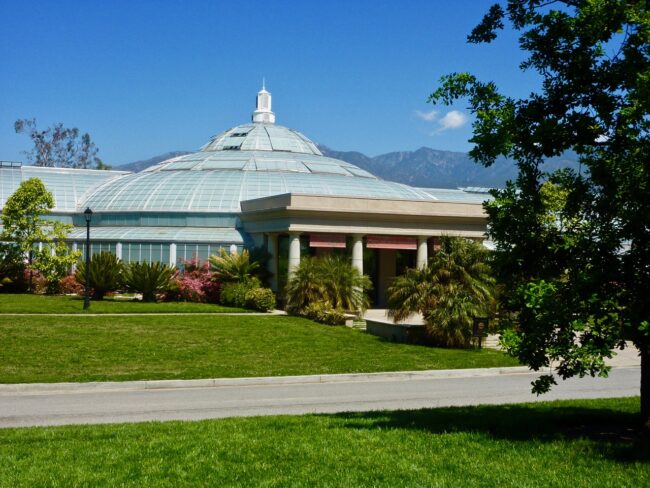
The Conservatory is a 16,000-square foot greenhouse that comprises three different habitats (a lowland tropical rain forest, a cloud forest, and a carnivorous plant bog). Tracy said the photo on the right reminded her of Mick Jagger and gave her much satisfaction.
Oh, that corpse I told you about? Five times since 1999, the Huntington has displayed a blooming Amorphophallus titanum, known by many as a “corpse flower.” Yes, it stinks, although when we visited last, the stench had pretty much worn out (except for my old t-shirt). Hopefully, it will bloom again, so I can say, “Something stinks at the Huntington!” (When the first one of these bloomed at the Huntington in 1999, more than 75,000 people showed up, since this was only the 11th time one had bloomed in the United States.). So when I sometimes say the Huntington “stinks,” it’s not a bad thing.
Tracy and I visited on one of those rare rainy days last spring to check out the Conservatory.
Walking by the Virginia Steele Scott Galleries of American Art and the sculpture of Goddess Artemis …
… we ran into this cute family.
There was no doubt that “mom” (or is that dad?) meant business and did not want us getting close to the kids, so we just took a gander at the geese. It seemed I was first in his pecking order.
Walking behind the European Art Gallery, we took a downward path (a life pattern for me). It really is a jungle down there, which makes sense because we were in the Jungle Garden. Even though Guns N’ Roses didn’t sing, “Welcome to the jungle,” it’s still a cool place to hang out, especially on a hot day. The shade of the vast trees protected us from the sunlight.
A little waterfall flows through the jungle.
One of the highlights of the Jungle Garden is the ombu tree, “which grew from a seedling received from the U.S. Department of Agriculture in 1914. It had been growing in the Buenos Aires Botanical Garden since 1912.”
In a nearby pond, you’ll find a 1939 sculpture entitled Junge Frau (Young Woman).
This guy was just hanging out getting a tan.
Speaking of ponds, there’s a place that is well worth the effort to visit, especially in July. We carefully attempted not to disrupt this family’s picnic on the way to the Lily Ponds.
The Lily Pond was the Huntington’s first garden, started by Hertrich in 1904. Clara Huntington, Henry’s daughter, sculpted a statue of St. Francis in the mid-1920s.
Of course, being the Lily Pond, lilies are the star from mid-Spring through mid-August (which is when these photos were taken last year). Don’t be coy and take a picture of the koi in the pond where, no matter what the season, everything seems to go swimmingly. I think I heard a bullfrog (might have been Jeremiah) say to Tracy, “Hey, come on over to my pad.”
In July, stop by around the second week to catch the summer flowering lotus that was planted in 1905.
(For another Lotus extravaganza, check out the Echo Park Lake Lotus Bed, about 25 minutes from here, in late June and July.)
Although we didn’t visit on Palm Sunday, we did view an abundance of palms. I never knew there were more than 200 palm tree species, and at the Huntington, there are 148. The Palm Garden suffered numerous setbacks back in the early part of the 20th century, mainly due to frost. Today, it has formed its own sort of microclimate, and the palms have expanded slowly through the decades.
Our last garden stop was the most surprising and colorful.
Four decades ago, in another lifetime, I was a country music DJ in California’s High Desert. Desert landscape did not appeal to me, although Waylon Jennings did. We visited the Desert Garden at the Huntington in April 2019.
Wow!
According to its website, the nearly 100-year old Desert Garden “is one of the largest and oldest assemblages of cacti and other succulents in the world.”
There are 2,000 different species of succulents, and between the color and oddly shaped ones, this suddenly wiped out all my preconceived notions about the desert. I never realized desert flora could be this beautiful. The Desert Garden is also where I found out that Tiger Woods had won the Masters, so I’ll always have the answer to, “Where were you when Tiger Woods won the 2019 Masters?” Thank heavens for our DVR.
Note: For Huntington savants, you might notice I left out one of the extensive gardens, the Australia Garden. Well, it was not for lack of trying. One day during the week I came by myself, and a sign in the Rose Garden pointed the way to the Jungle Garden and Australia Garden. I walked, and I walked, and I walked, and for the longest time, I didn’t see a sign to Australia.
Finally, I saw another sign pointing to the Australia Garden. It seemingly took as long to reach these gardens as it would to fly to Sydney. As a nod to Australia’s terrain, I was bushed. Had I walked further, I might have had to be buried “Down Under.” I decided to forego the garden, but at least I saw more beautiful flowers and trees on my fruitless search.
You could spend an entire day here just wandering through all the gardens at the Huntington, and if you often visit (like we do as contributing member), you’ll see something different blooming virtually every time.
There’s also a good possibility you’ll run into creatures small and smaller.
Remember to give them some room. That’s why your camera zoom was invented.
The gardens at the Huntington Library, Art Collections, and Botanical Gardens offer an enjoyable experience for both old and young. You can also take a free garden tour led by one of Huntington’s docents. These tours are offered between 10 a.m. and 2 p.m. Times vary depending on docent availability. No matter what time of year, expect the unexpected in the gardens at the Huntington. You might say, “The Huntington is a riot … of color.”
In the next installment, we’ll head indoors and explore the Huntington Art Gallery of European Art, which at one time was the home of Henry and Arabella.
Huntington Library, Art Collections, and Botanical Gardens
1151 Oxford Road
San Marino, CA 91108
Phone: 626.405.2240
Hours: 10 a.m. – 5 p.m. Wednesday – Monday
Cost: Weekdays $25 • Weekend $29 • Seniors/Students $21 & $24
Youths 4 – 11 $13 • Under 4 Free
Tours: Free, Paid and Audio available (check website for details)
www.huntington.org

